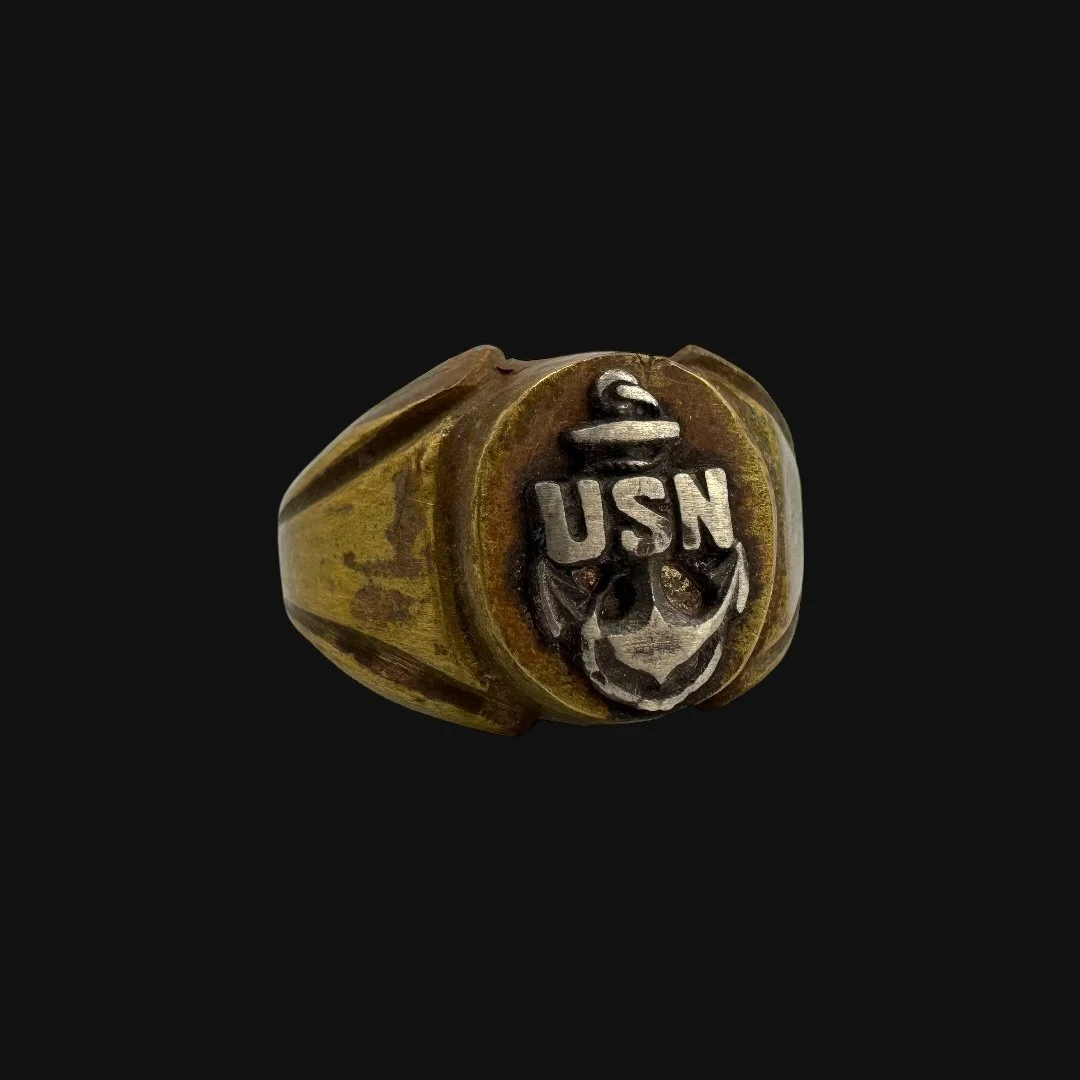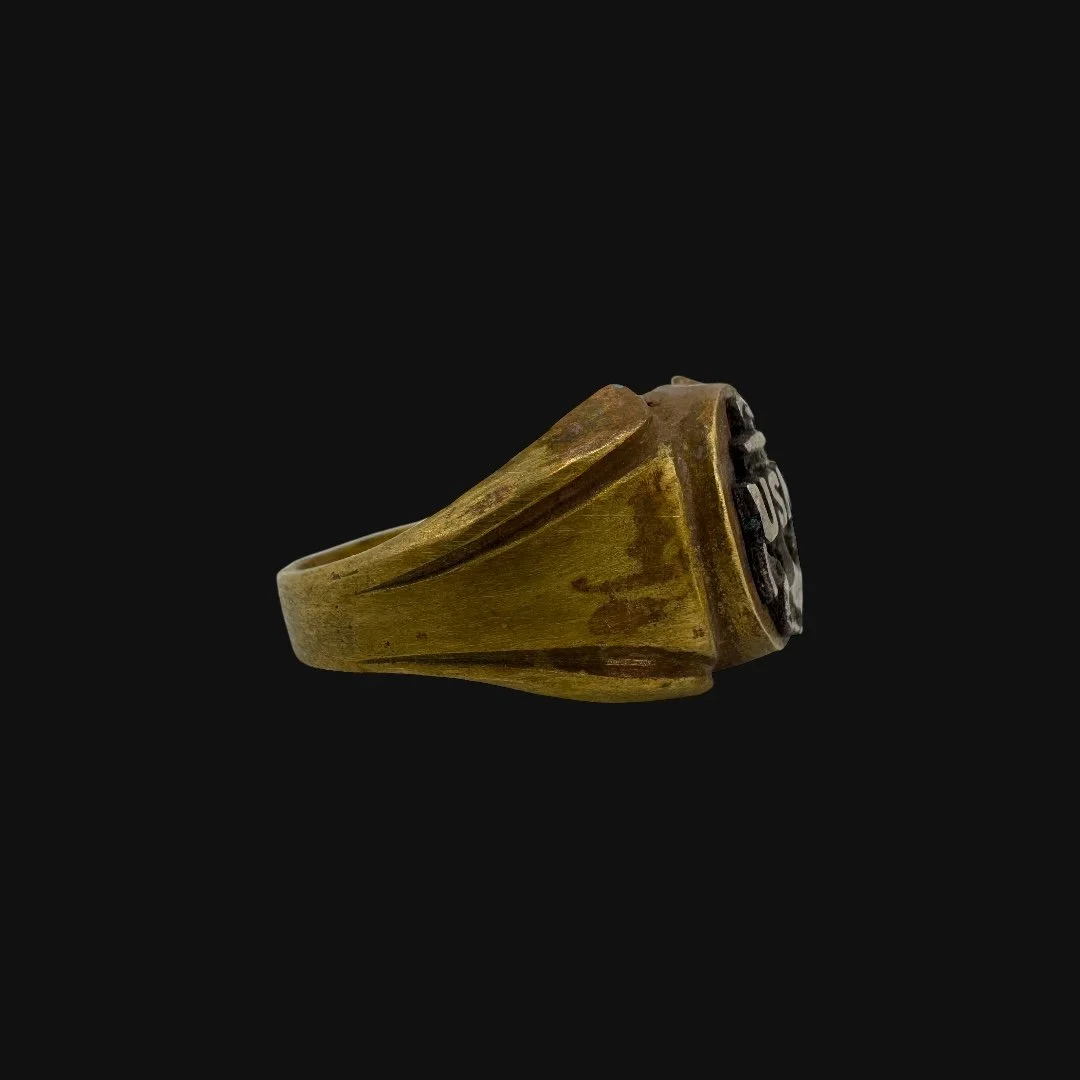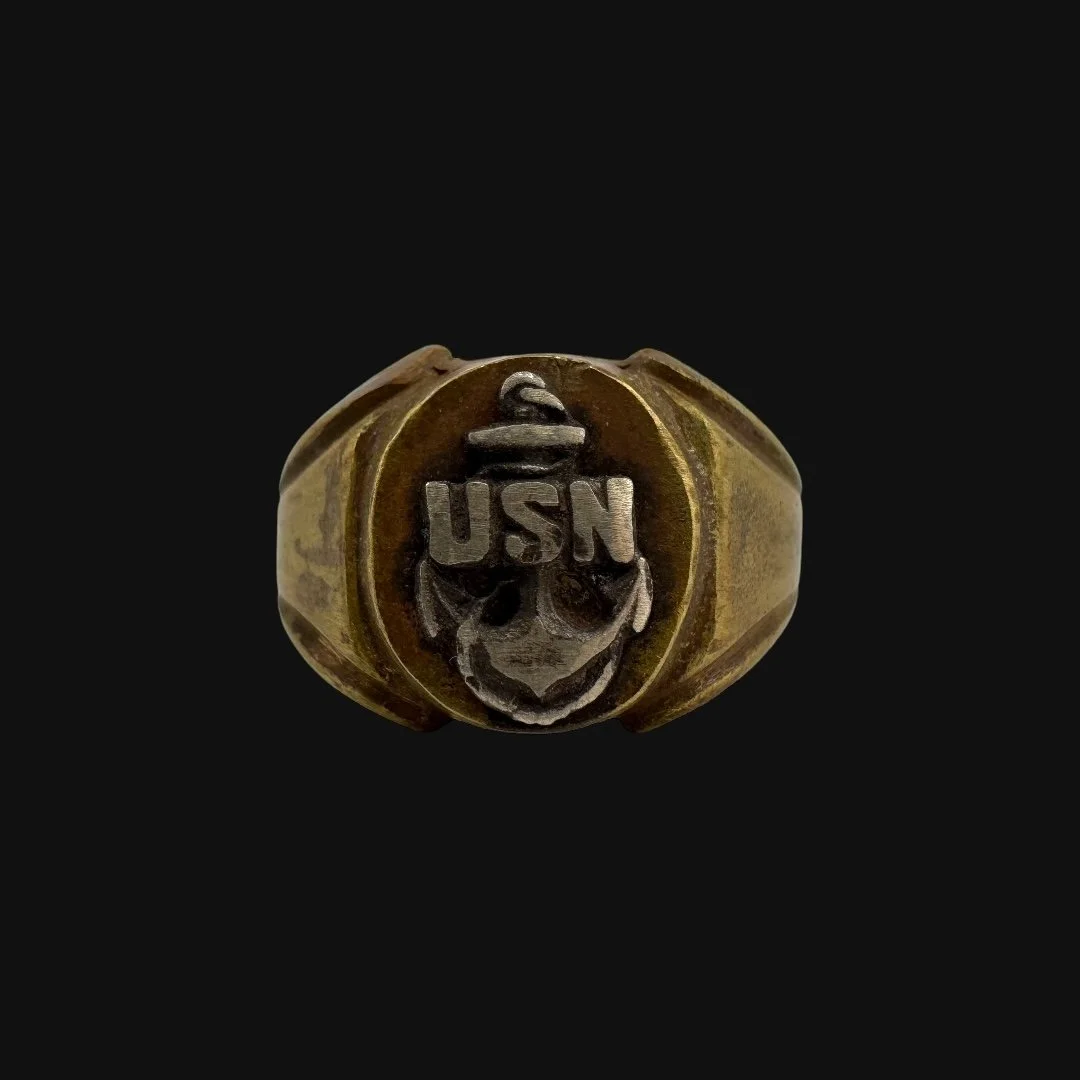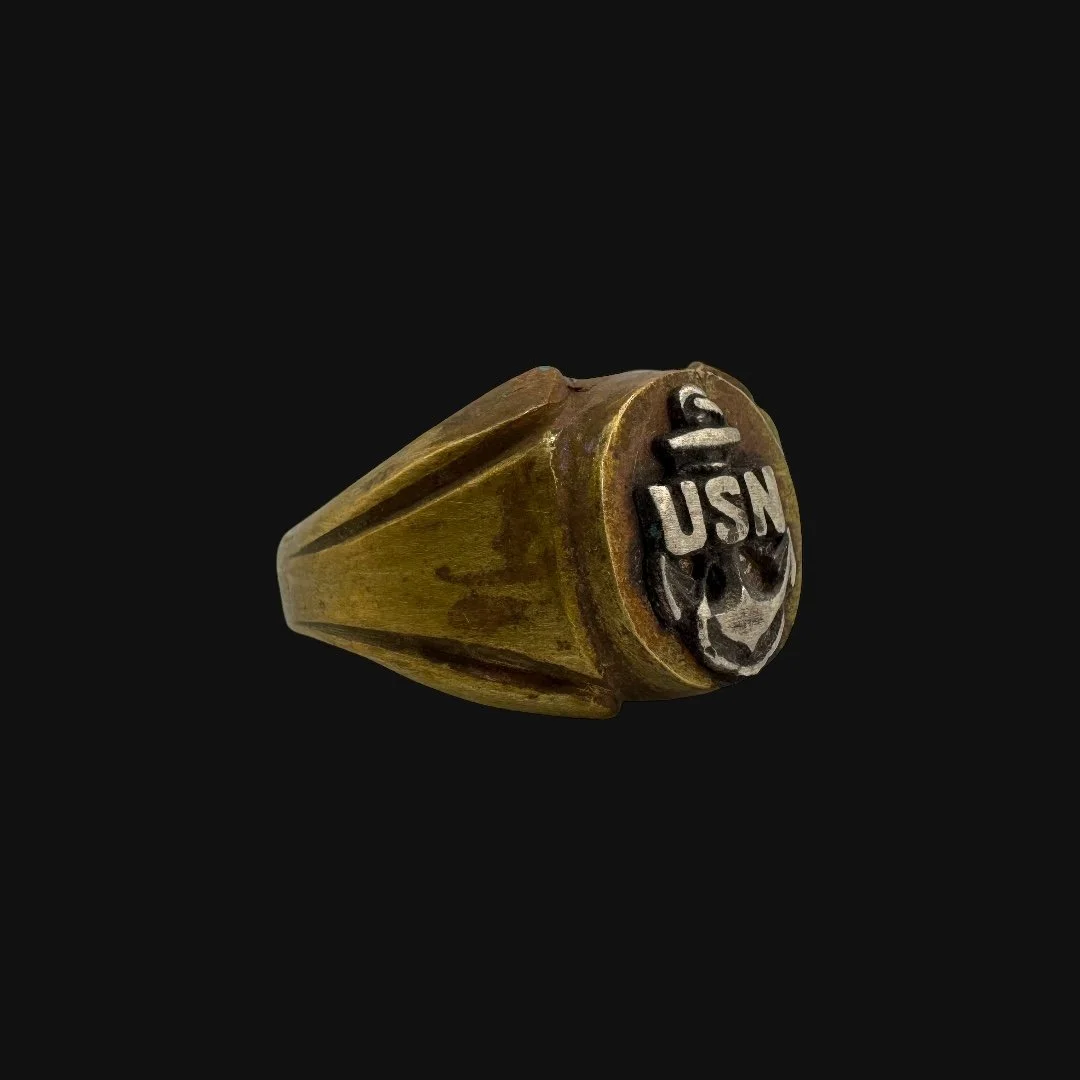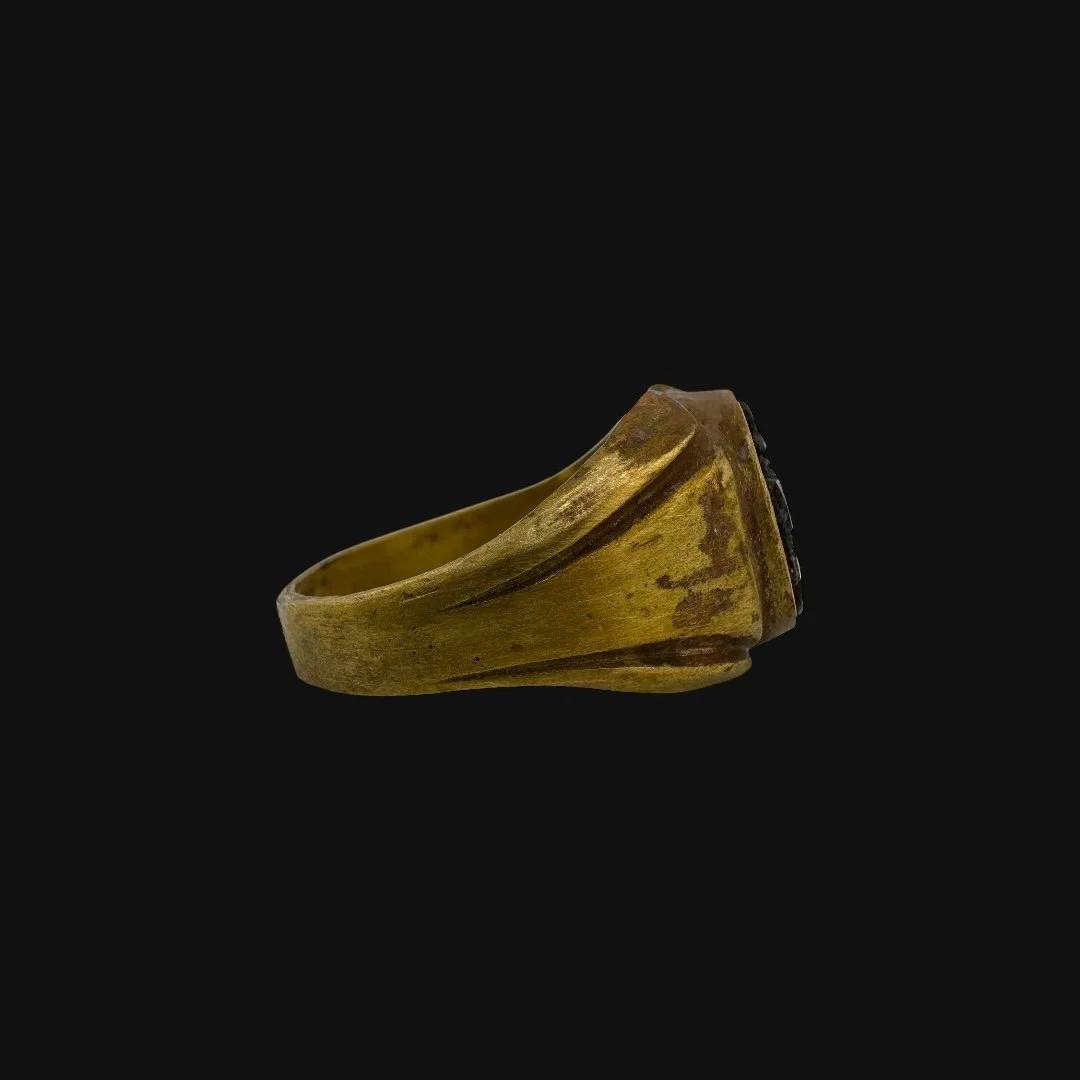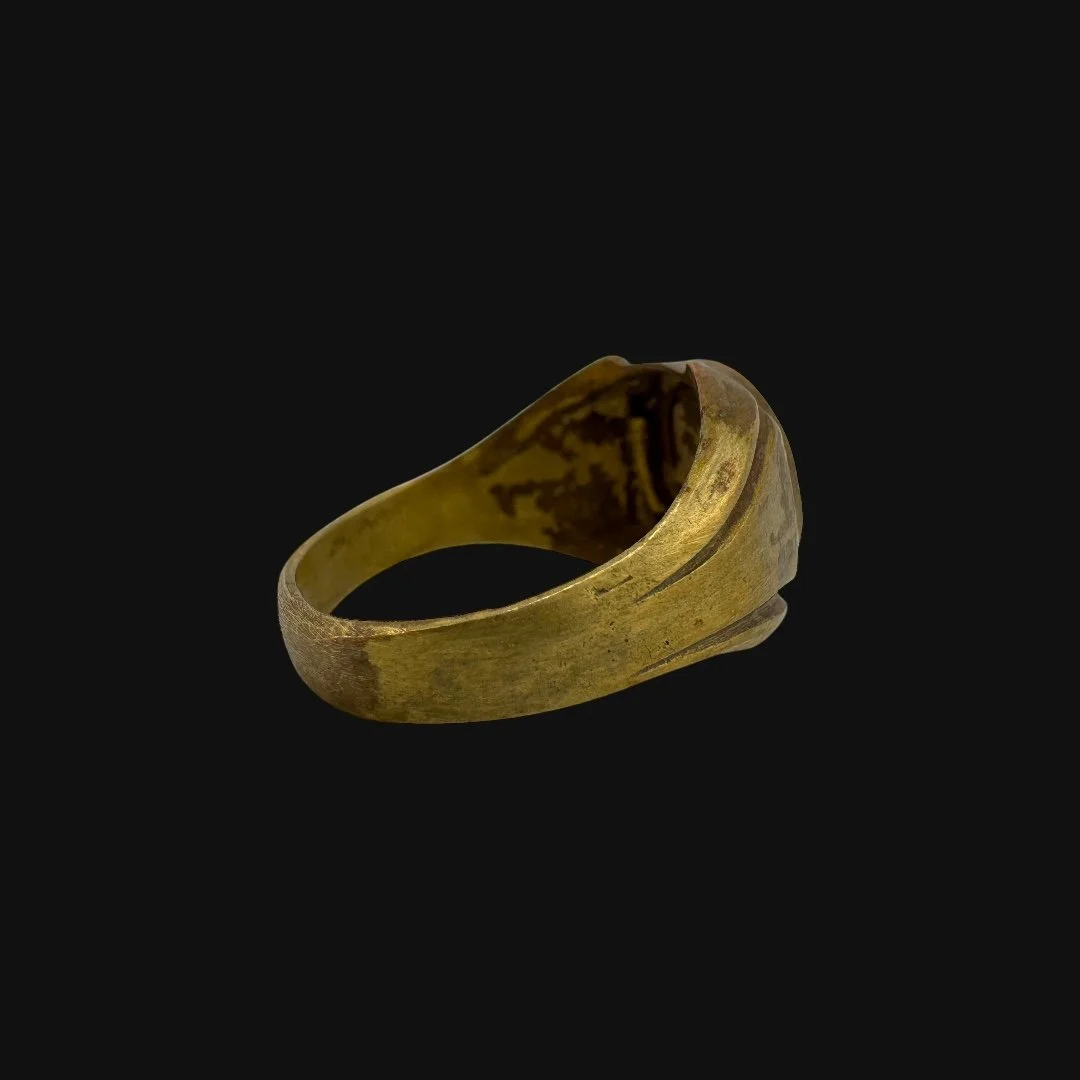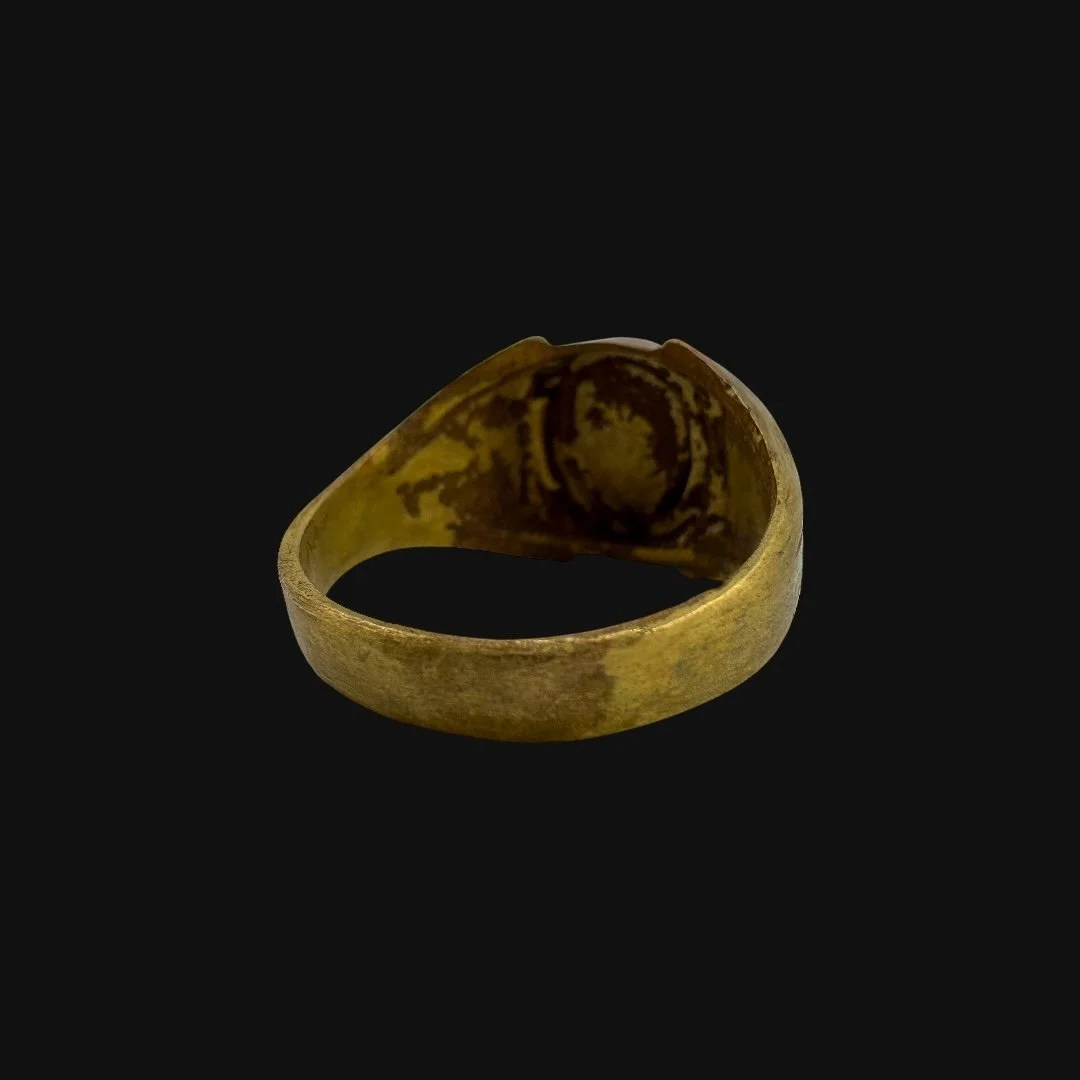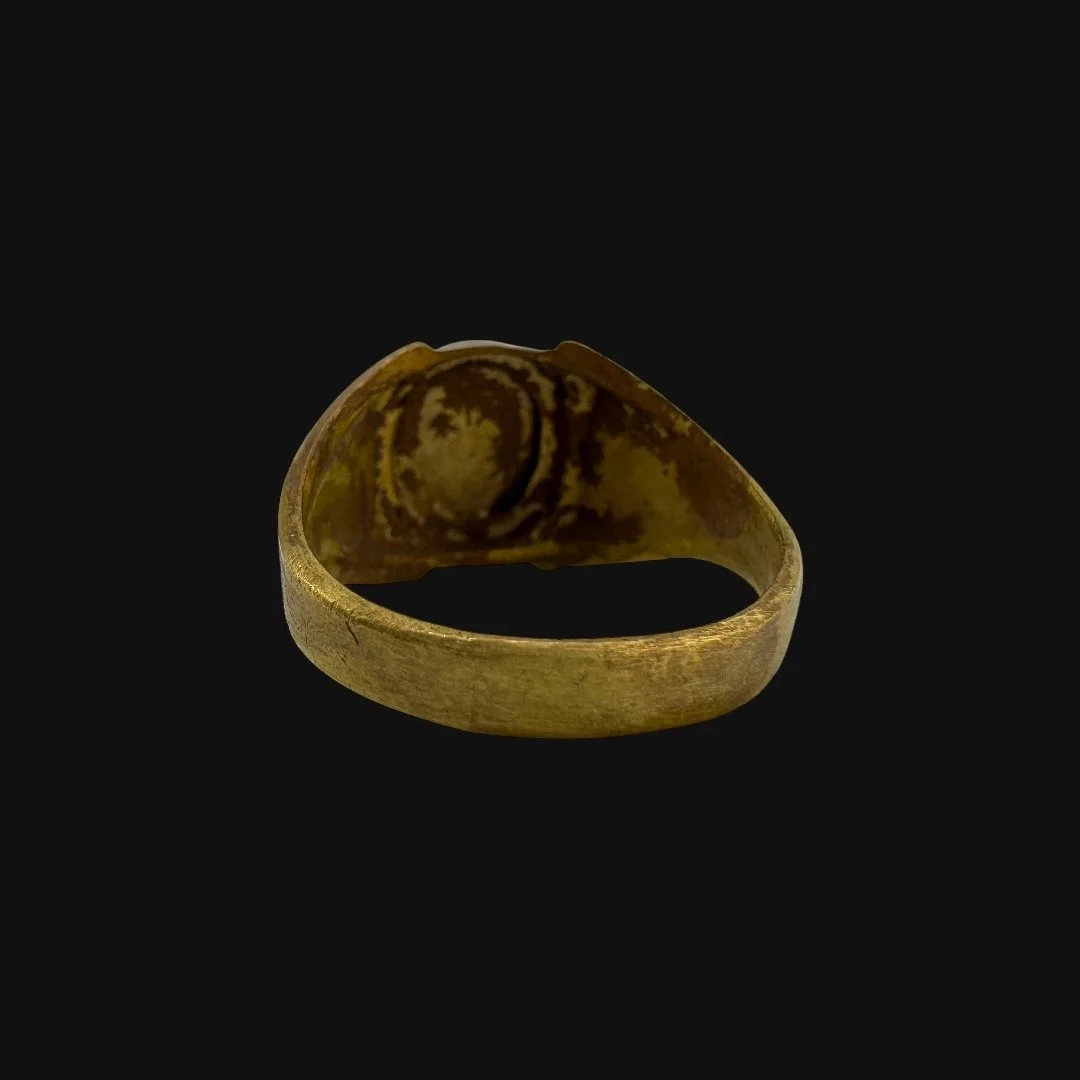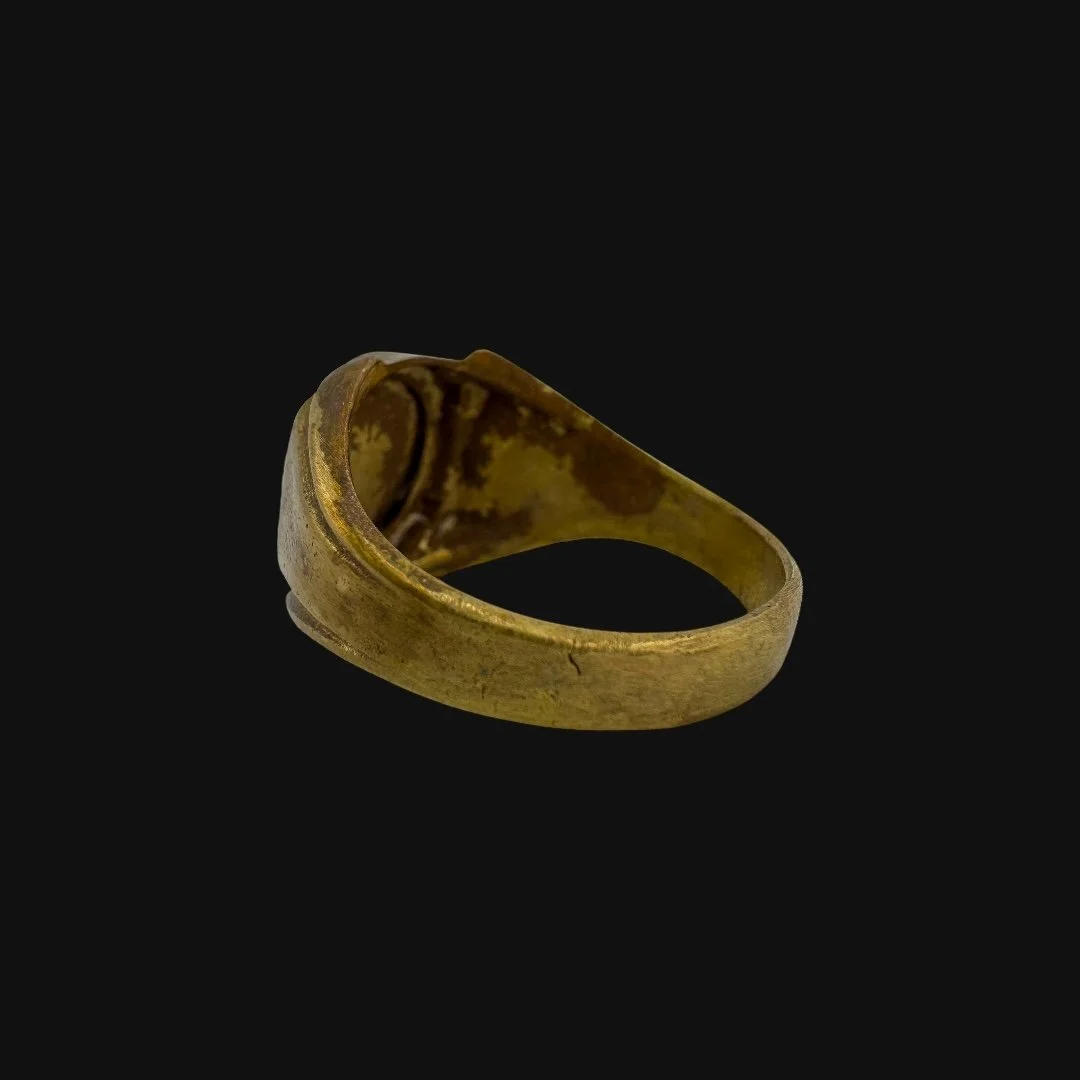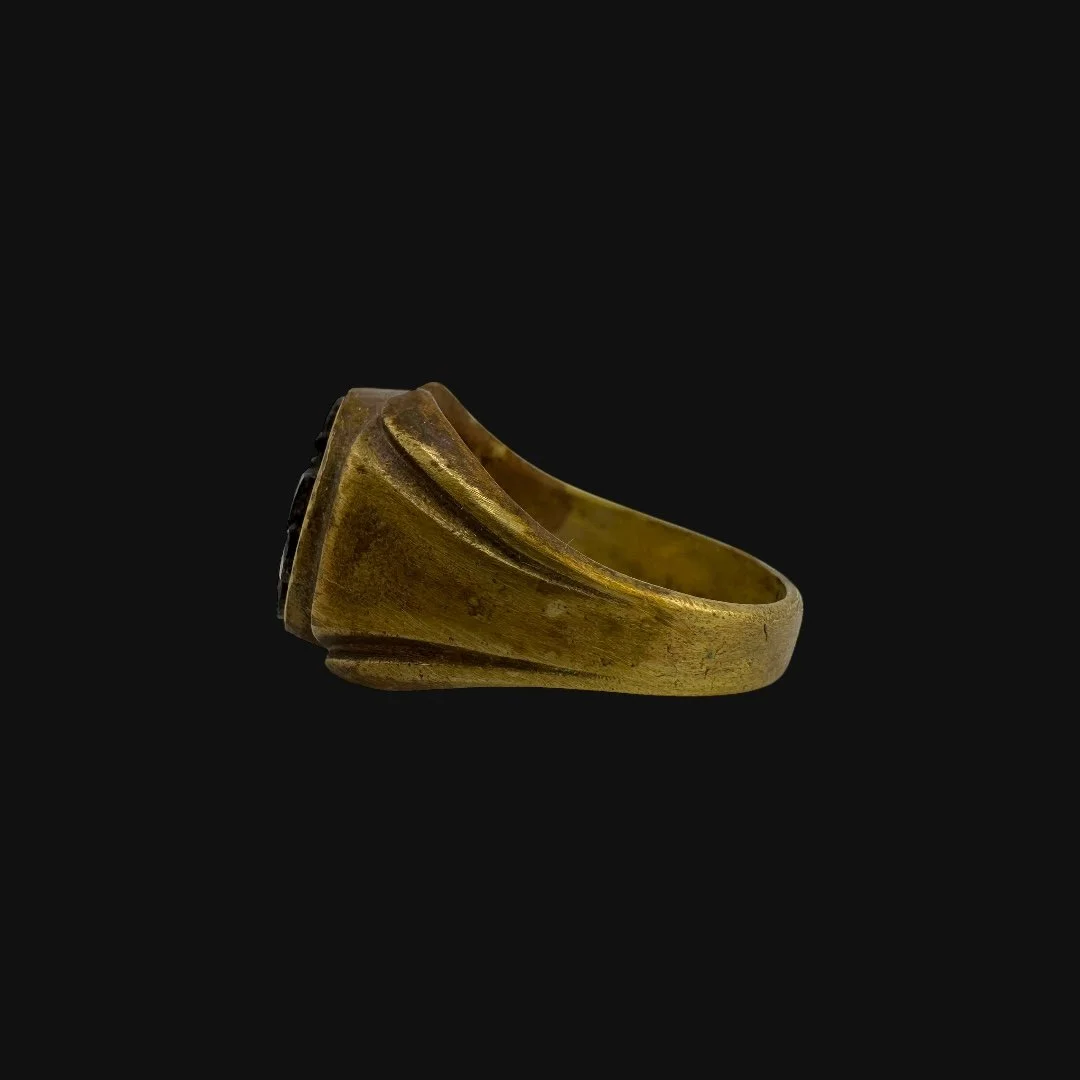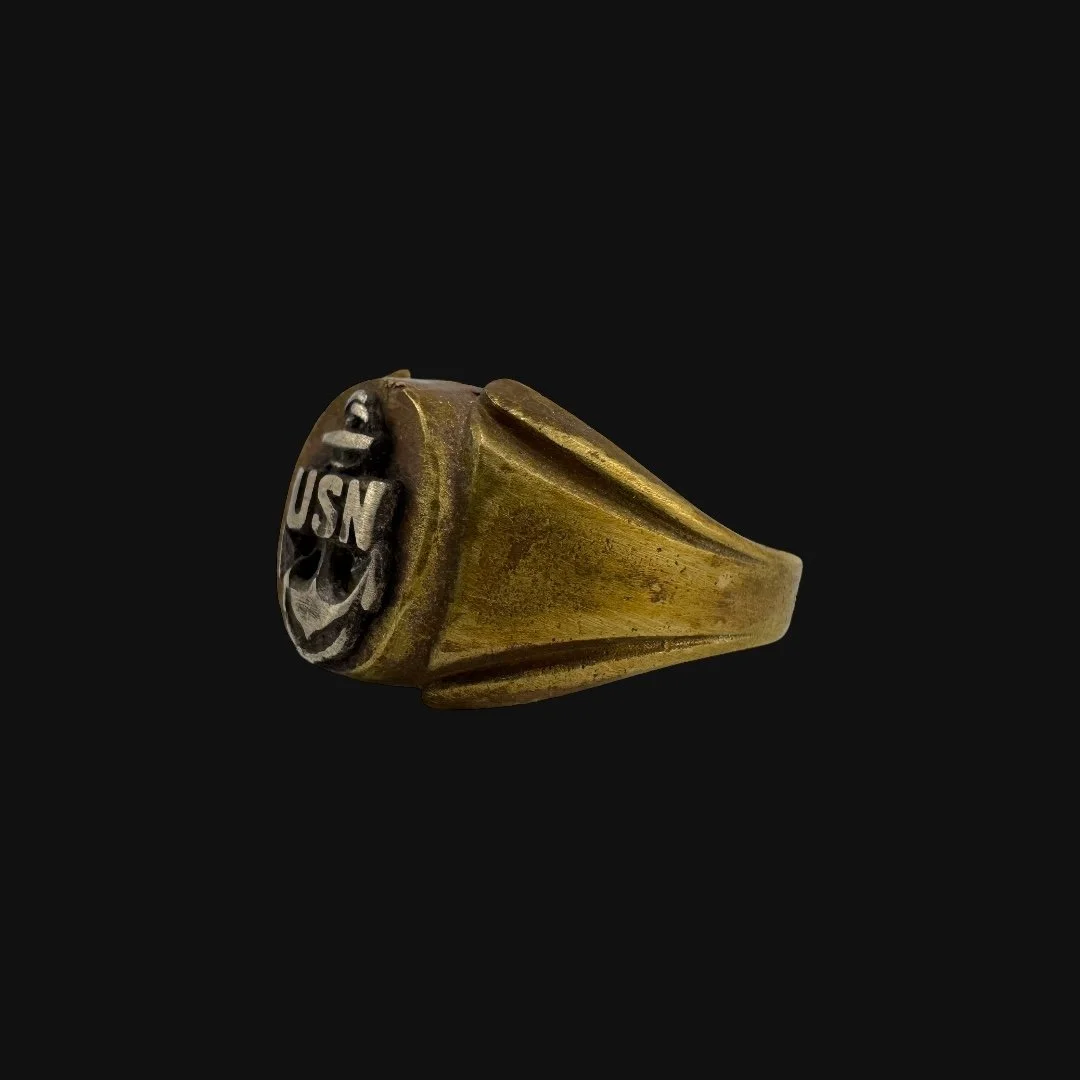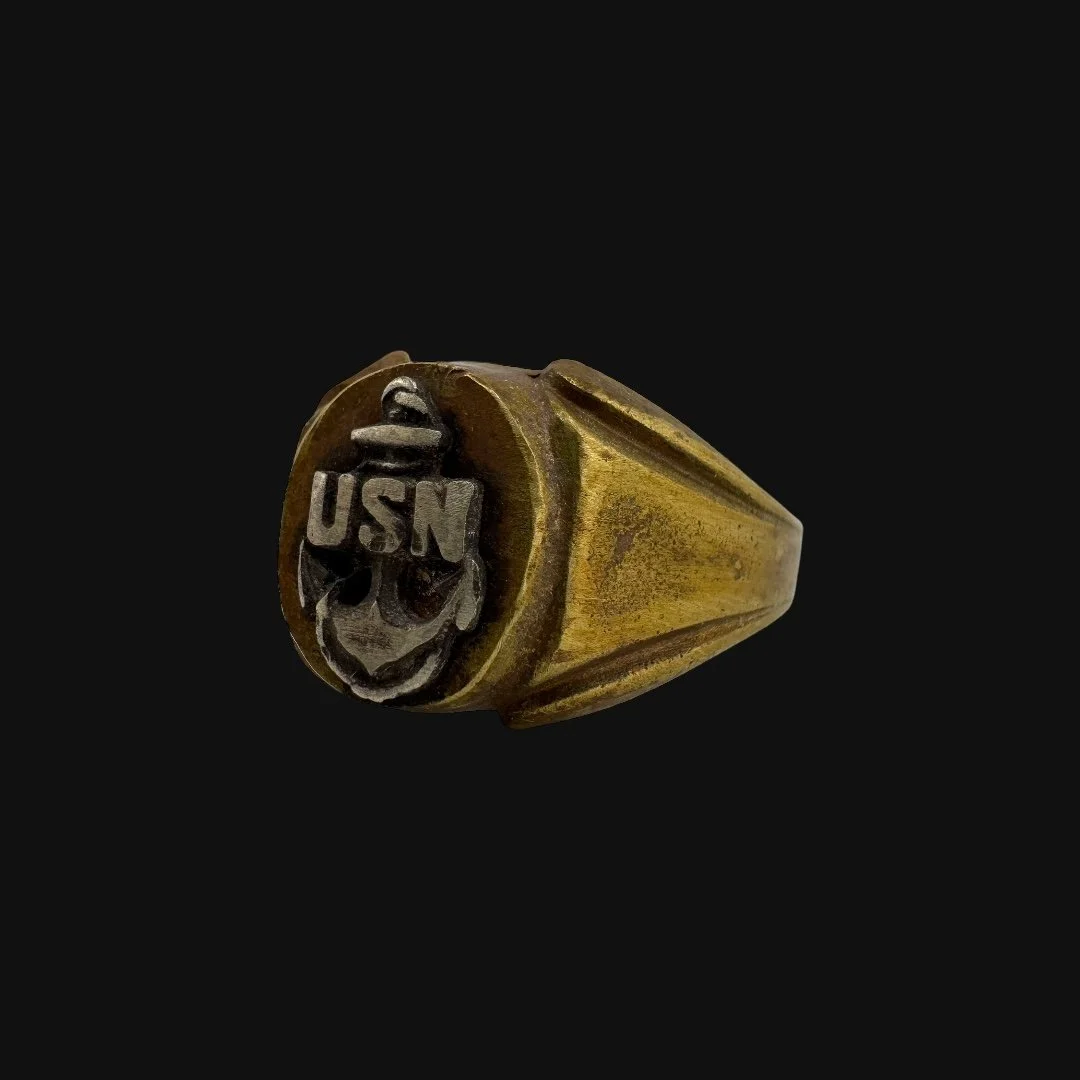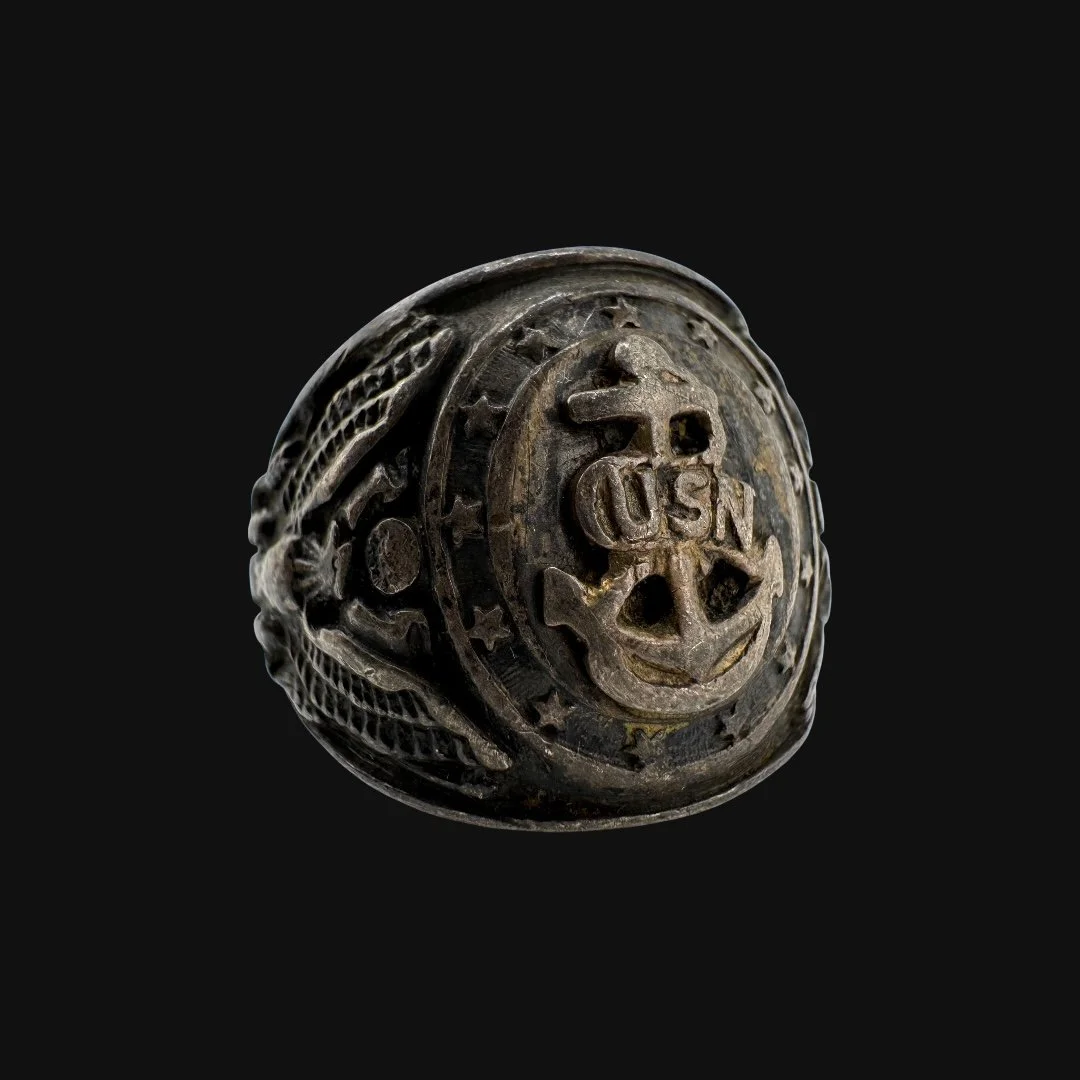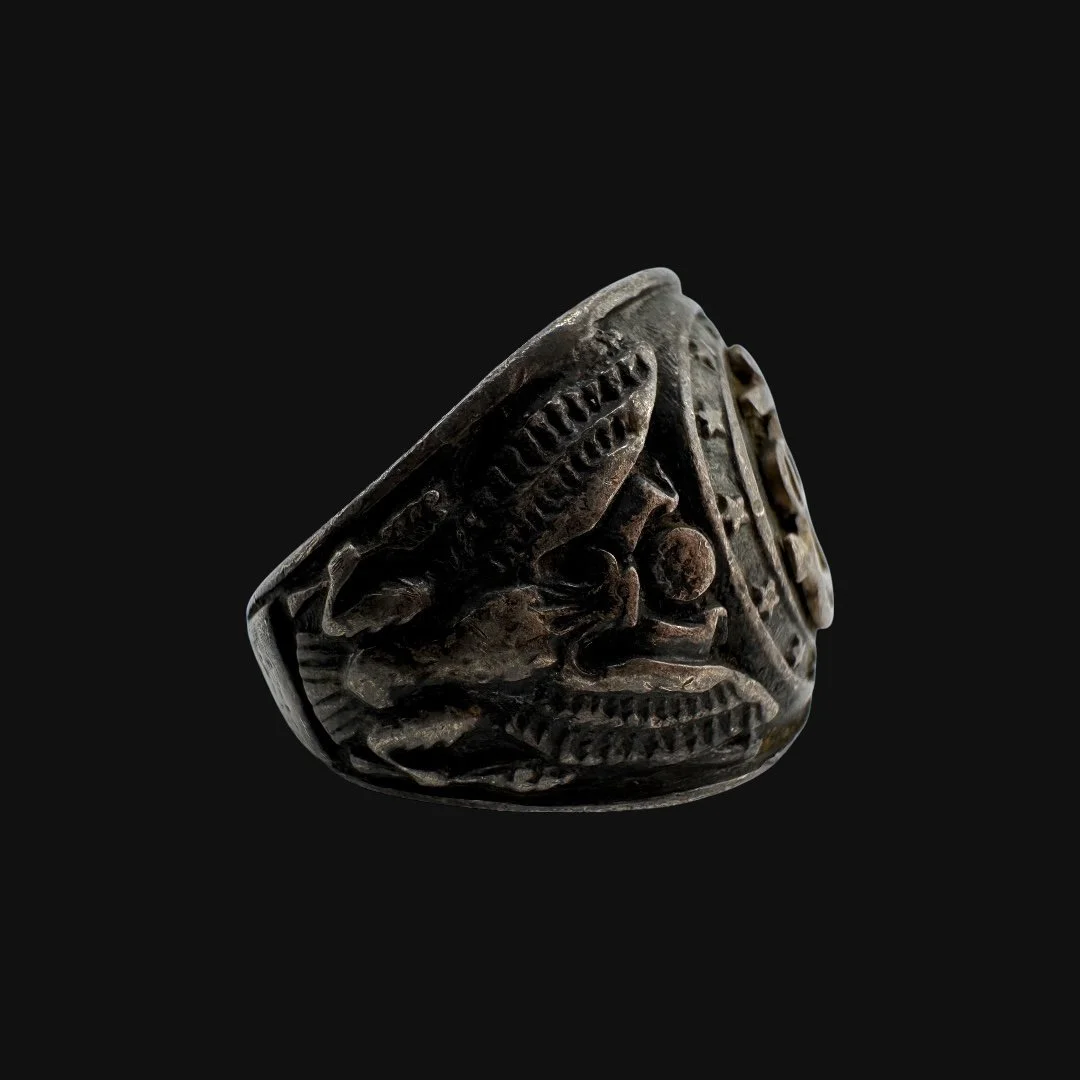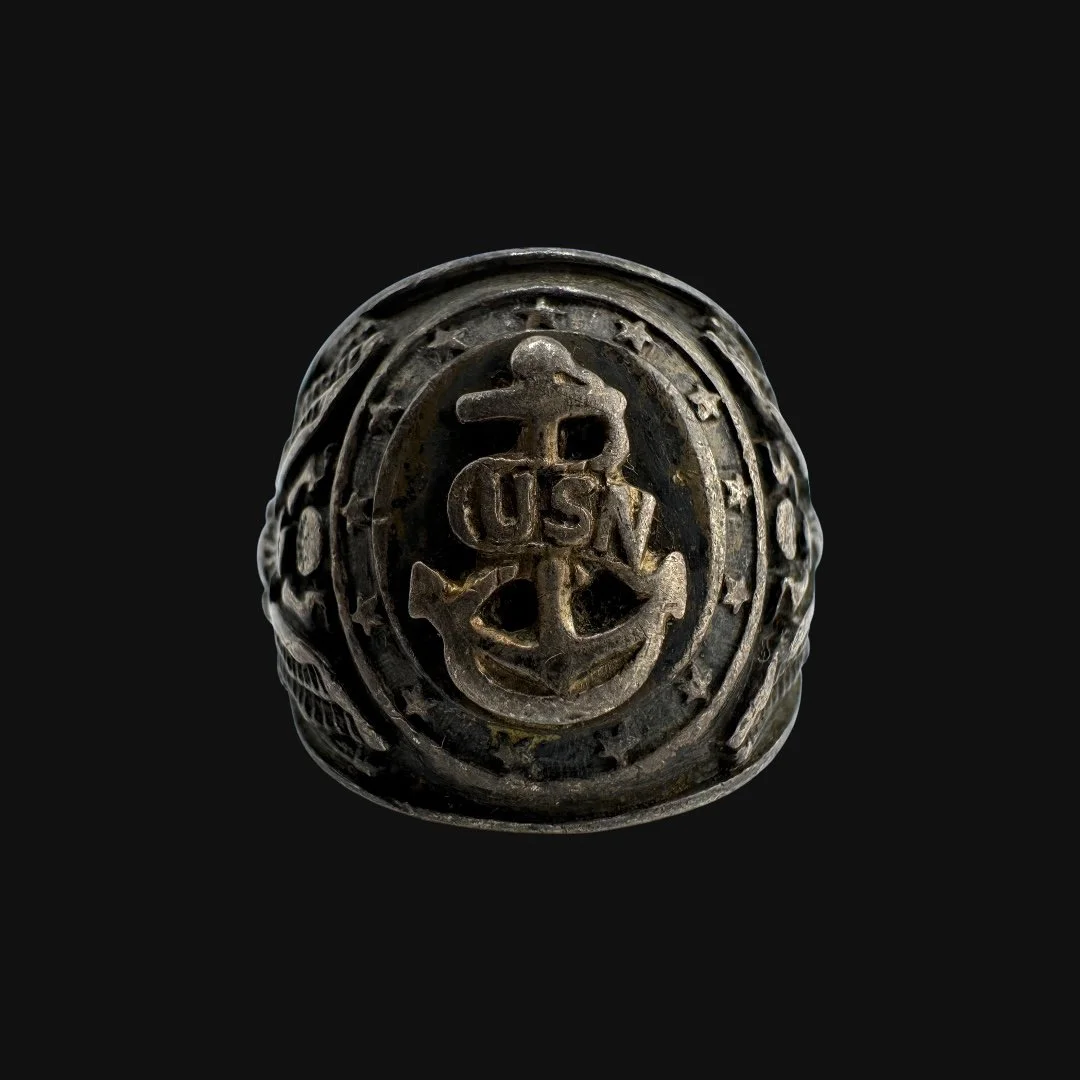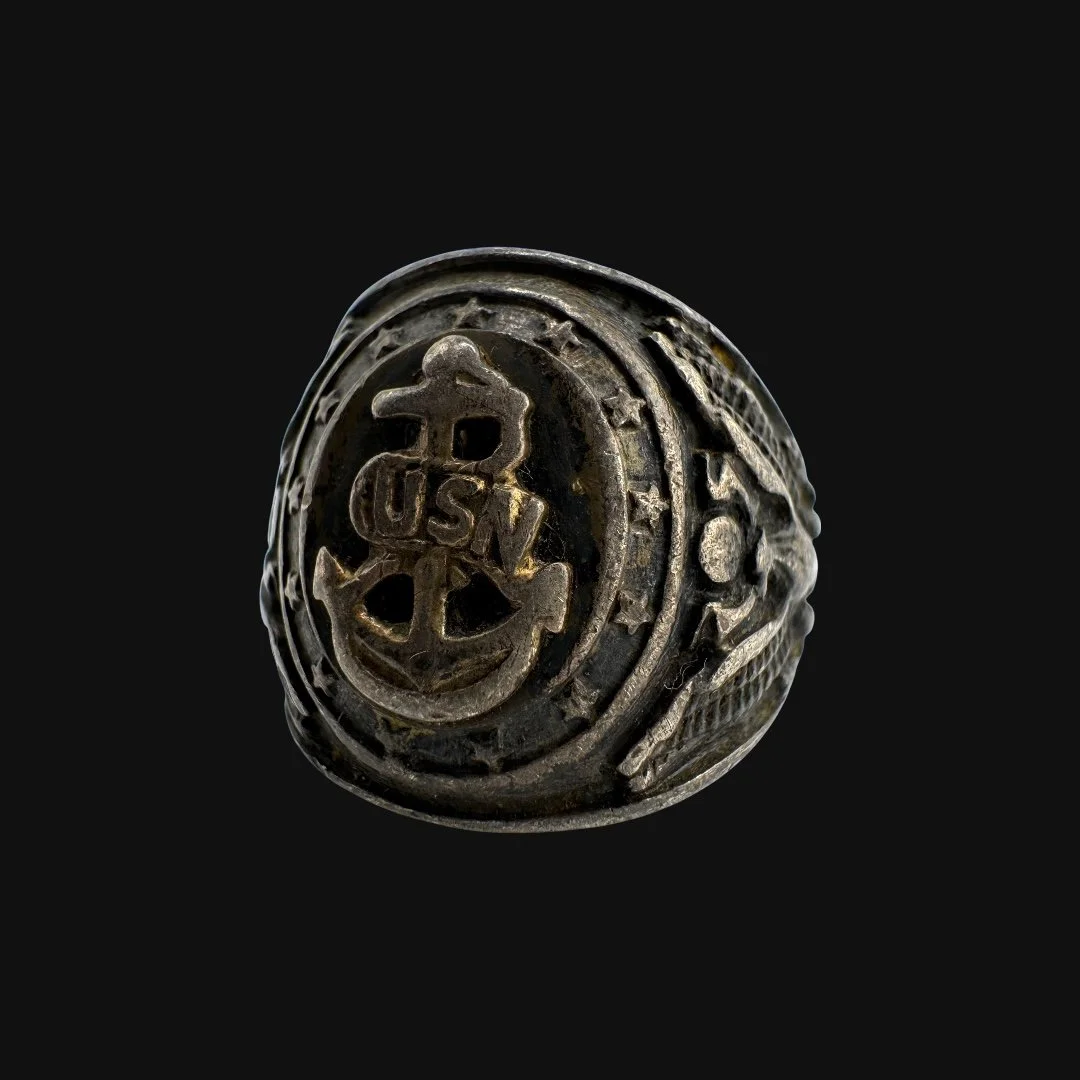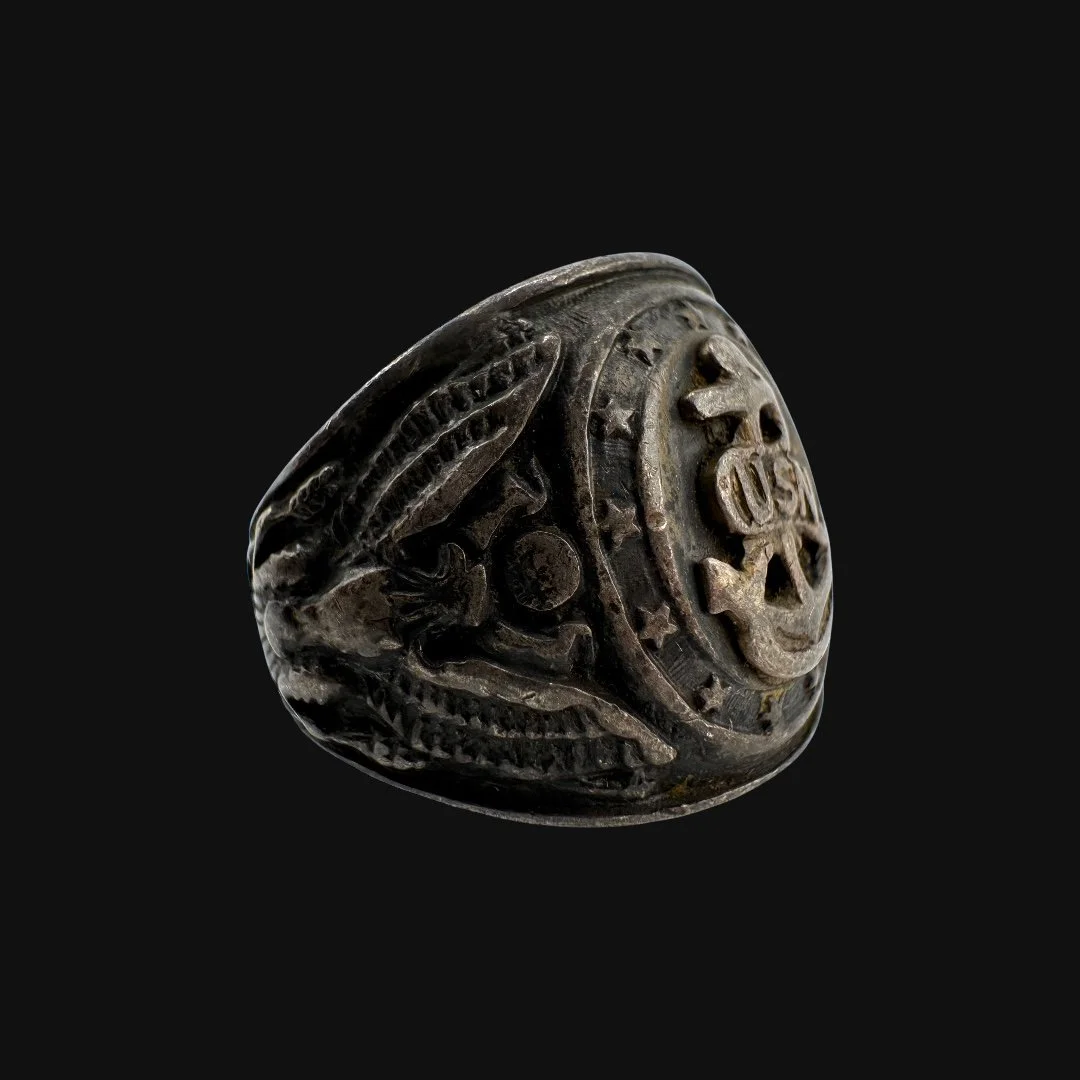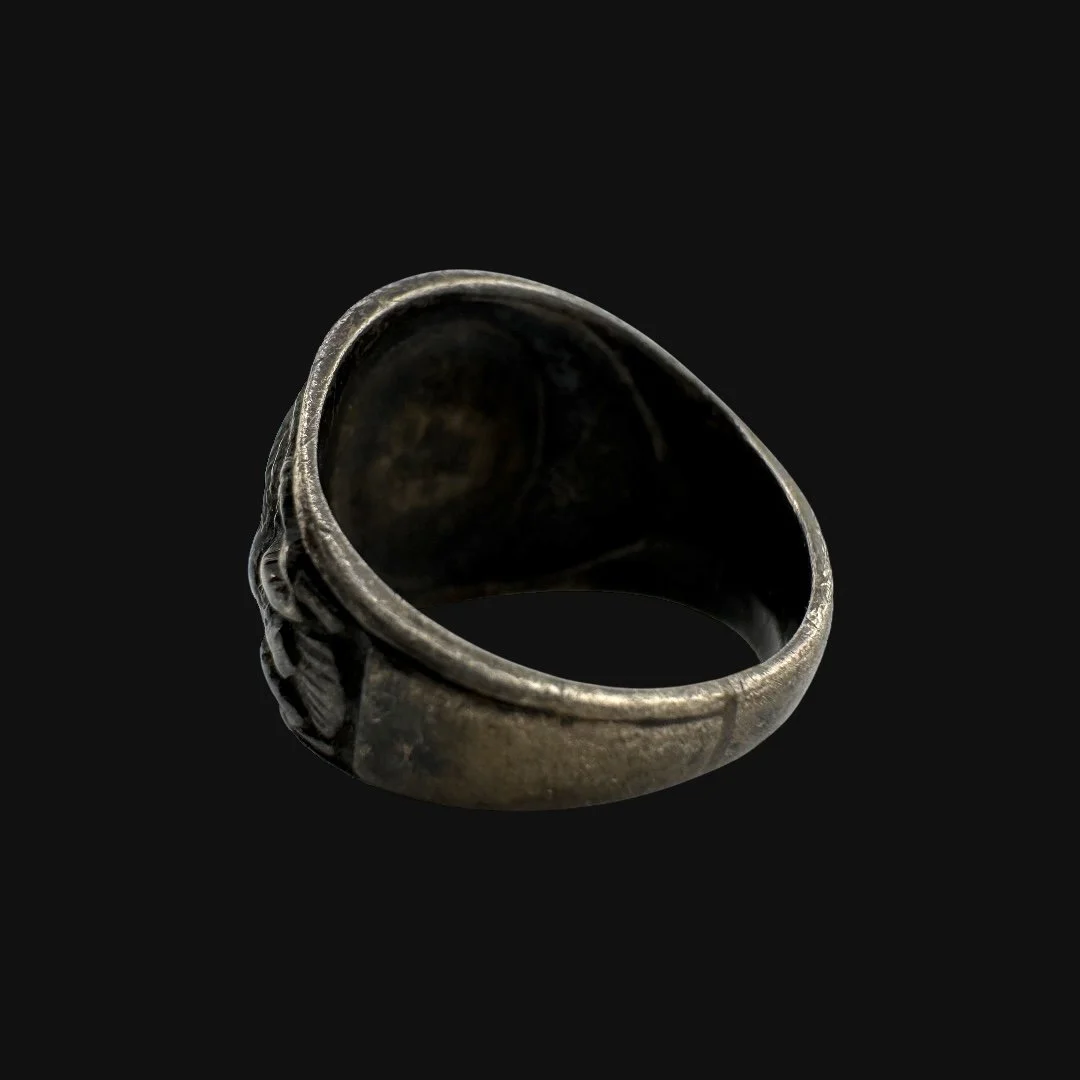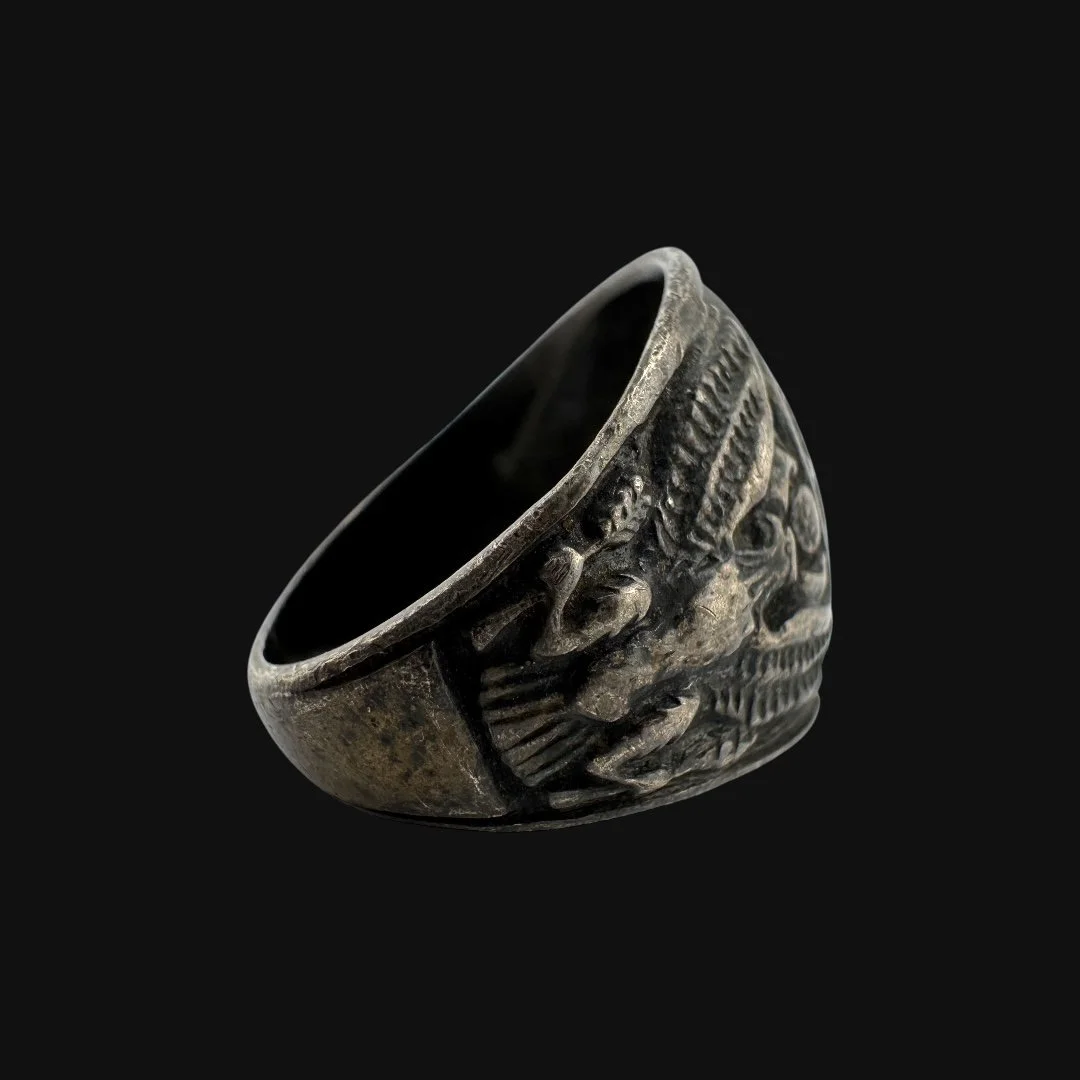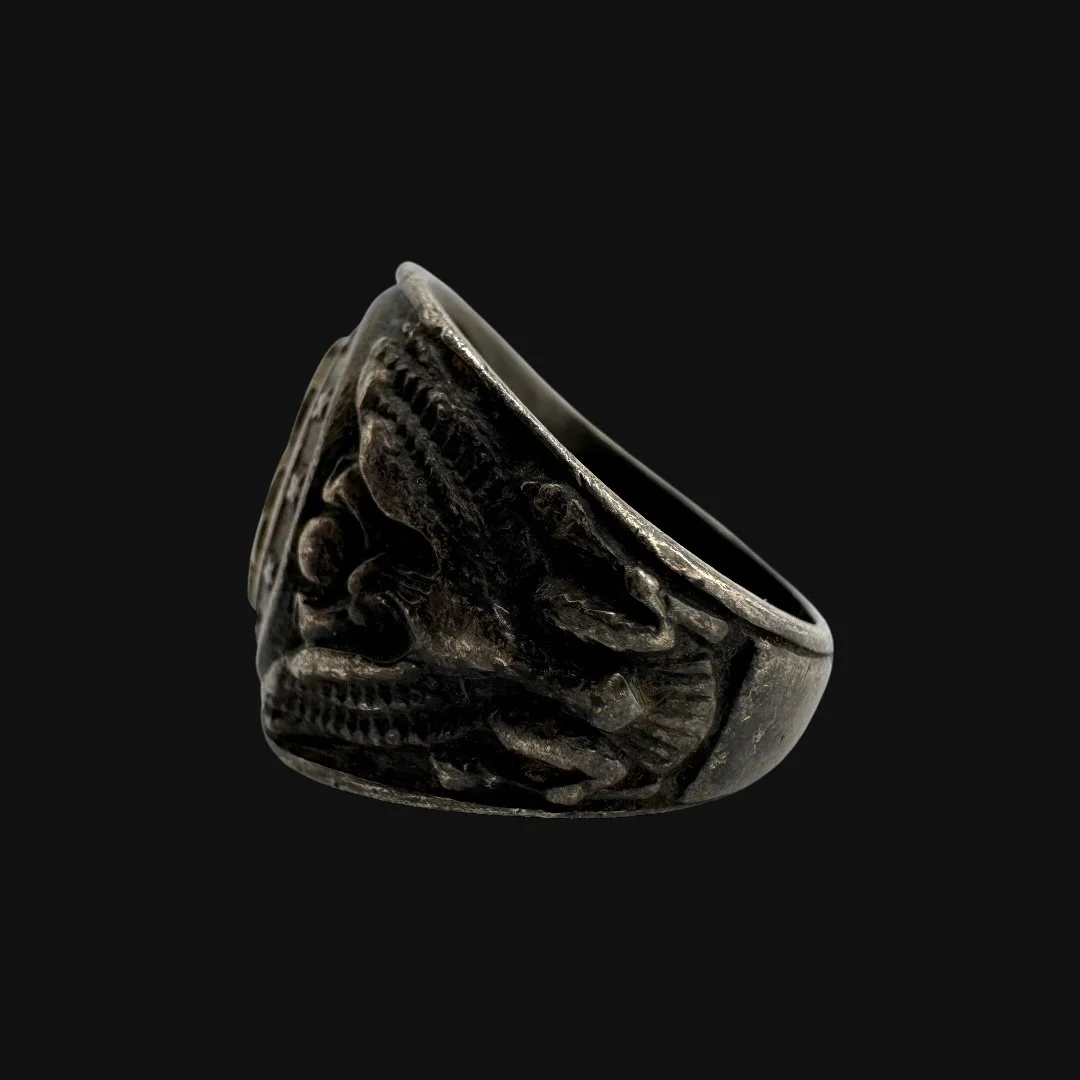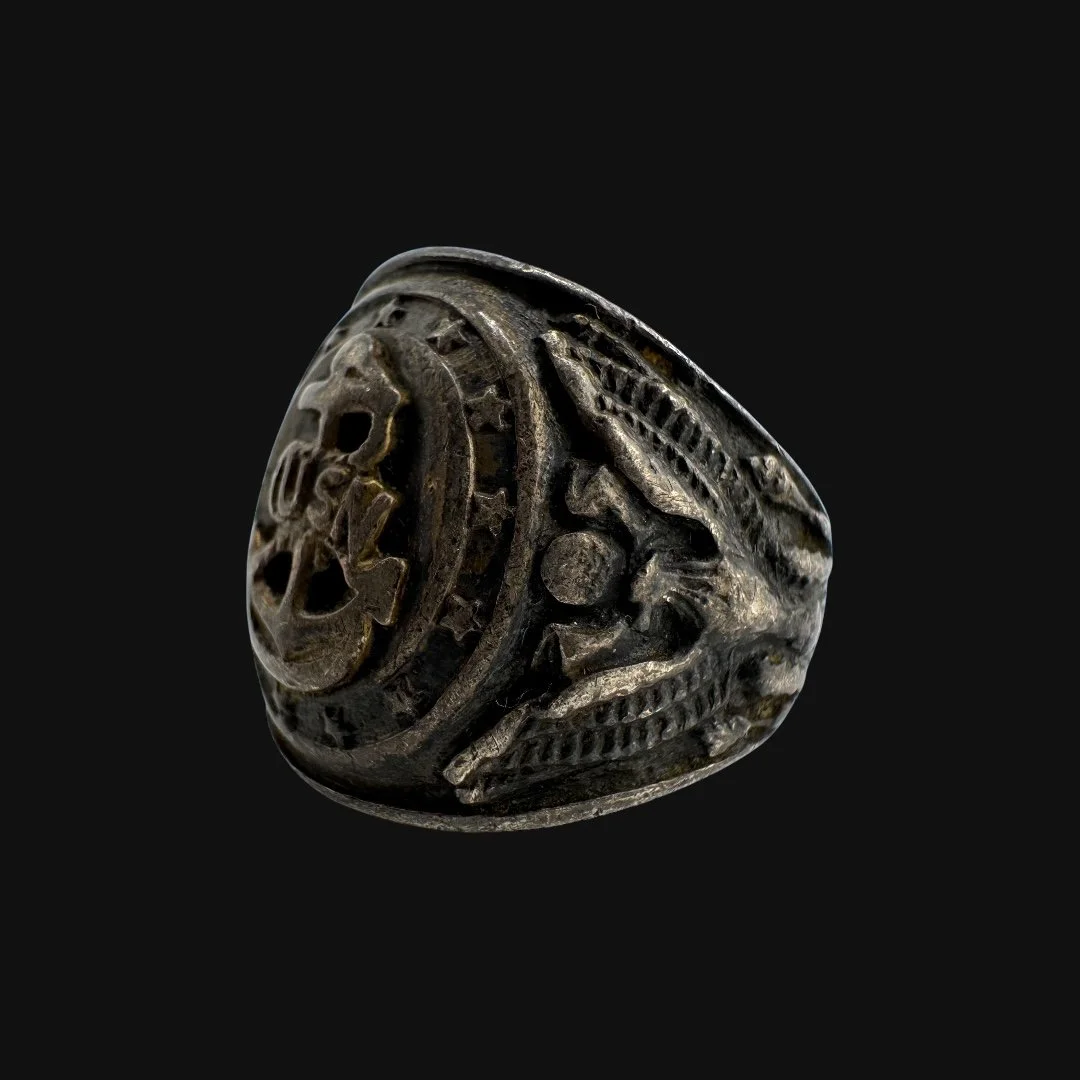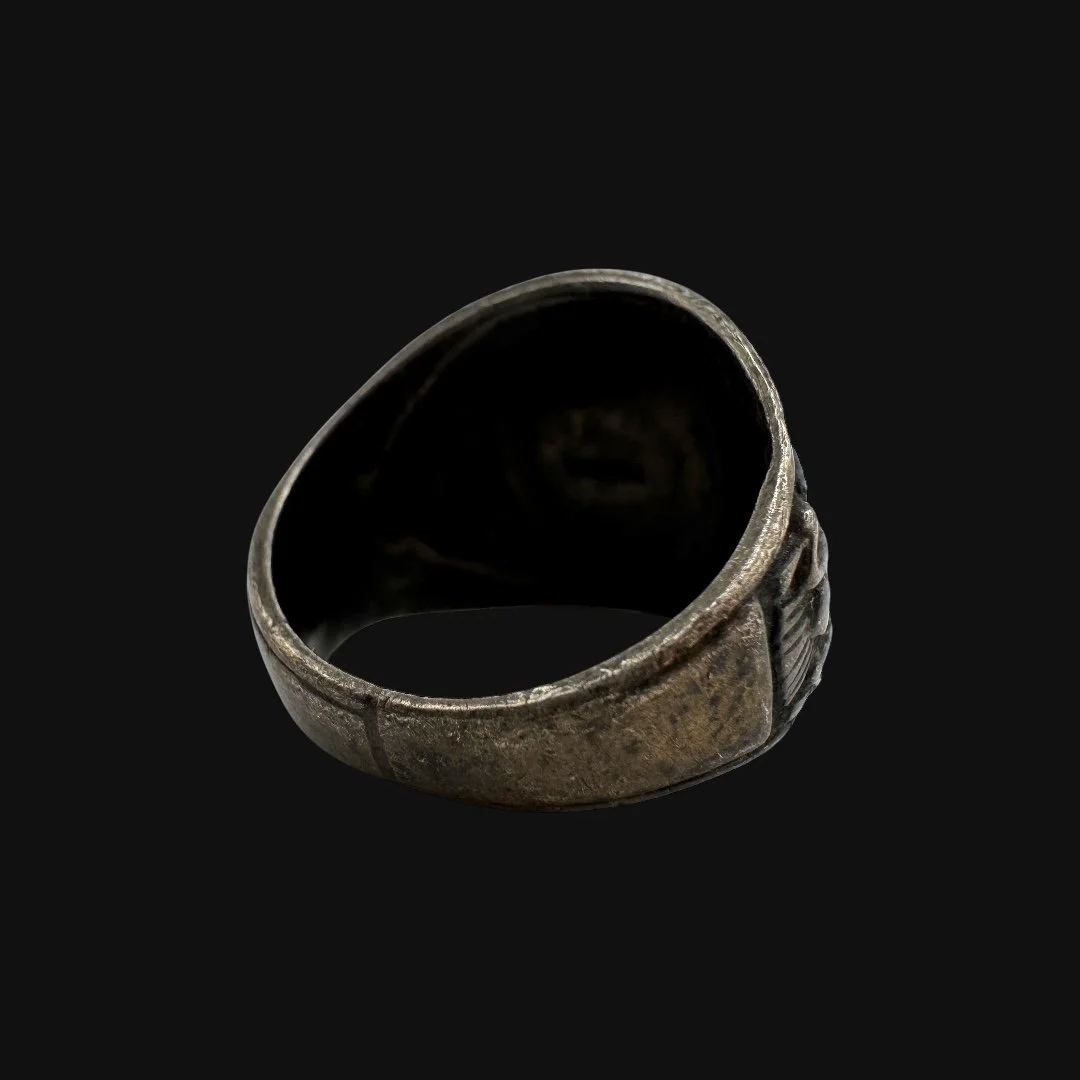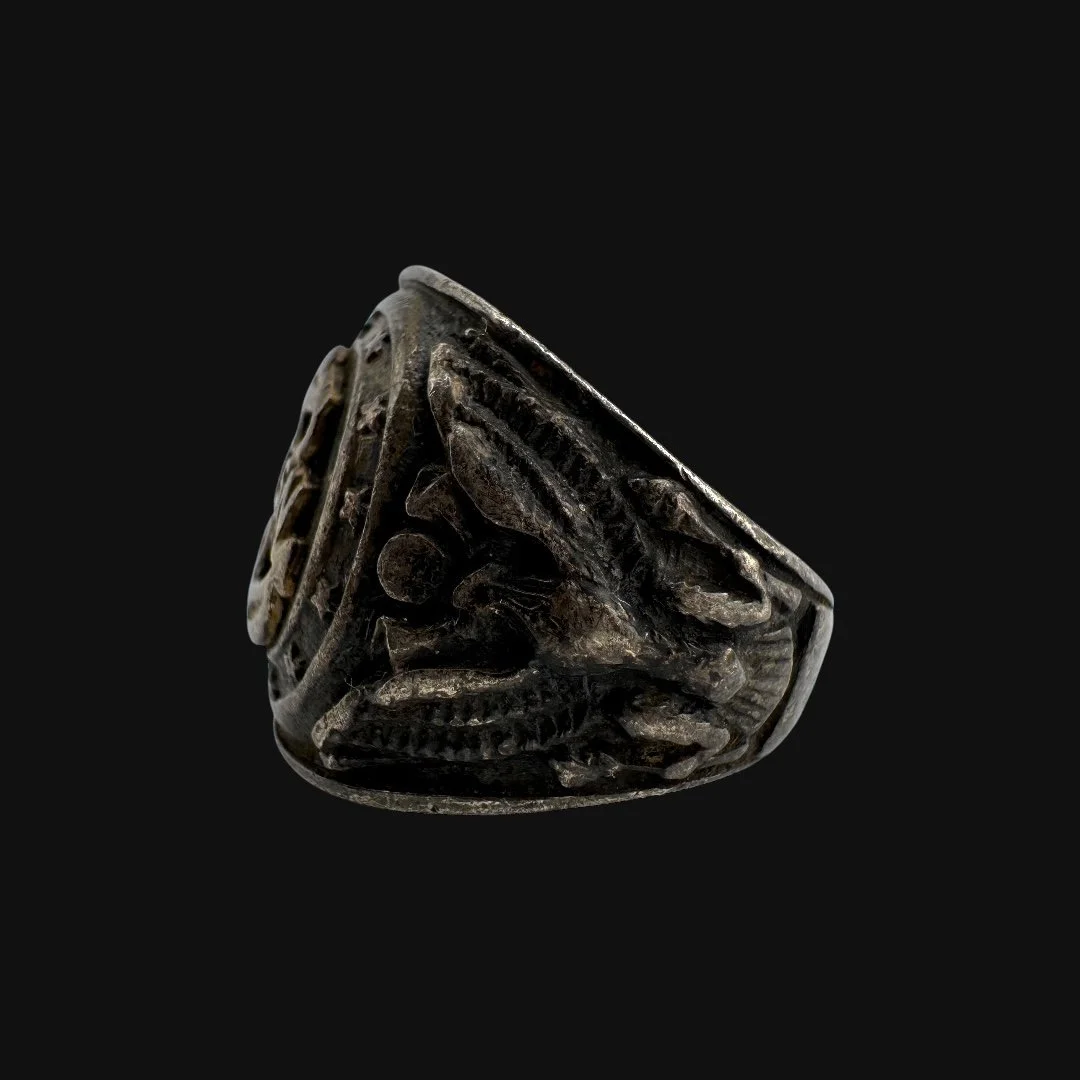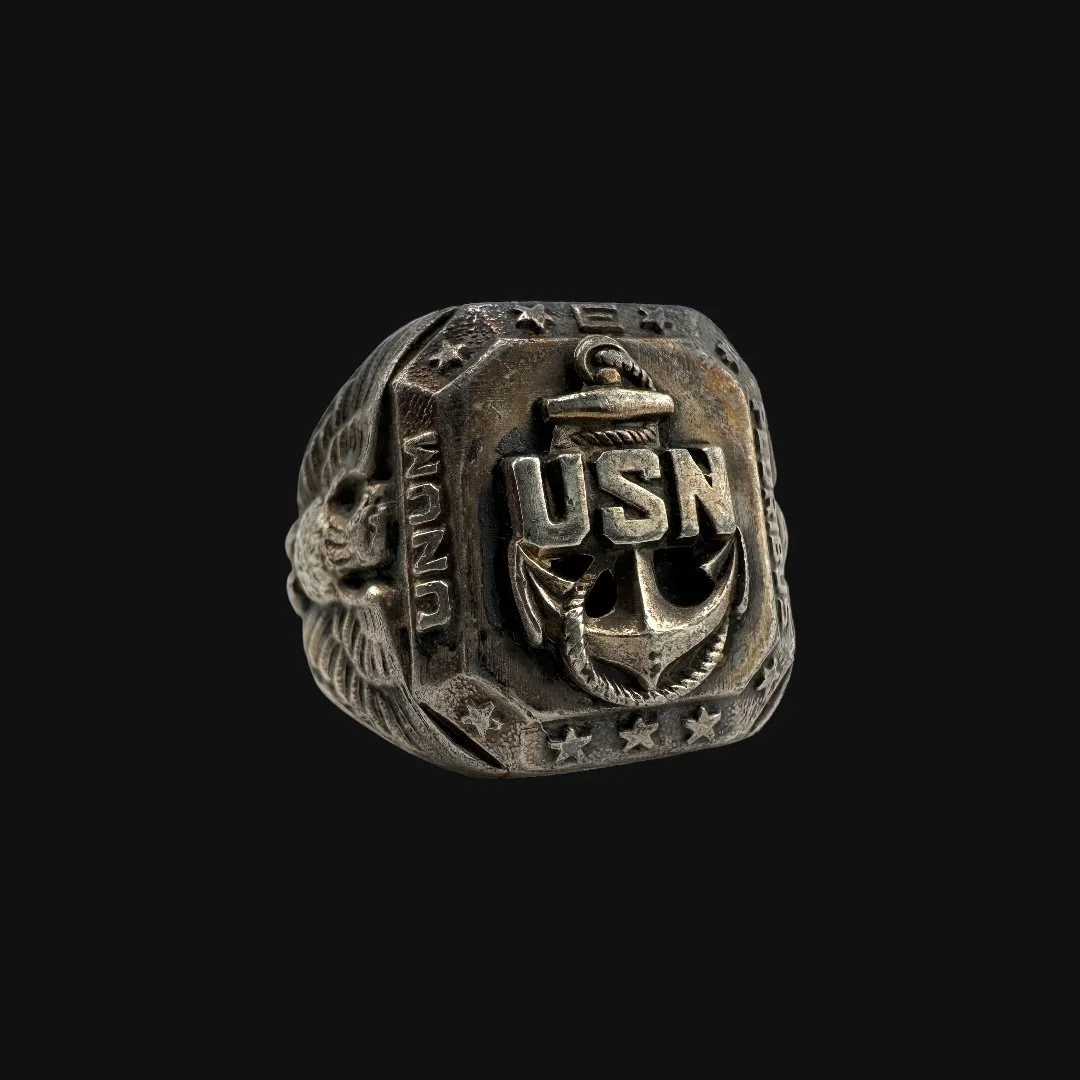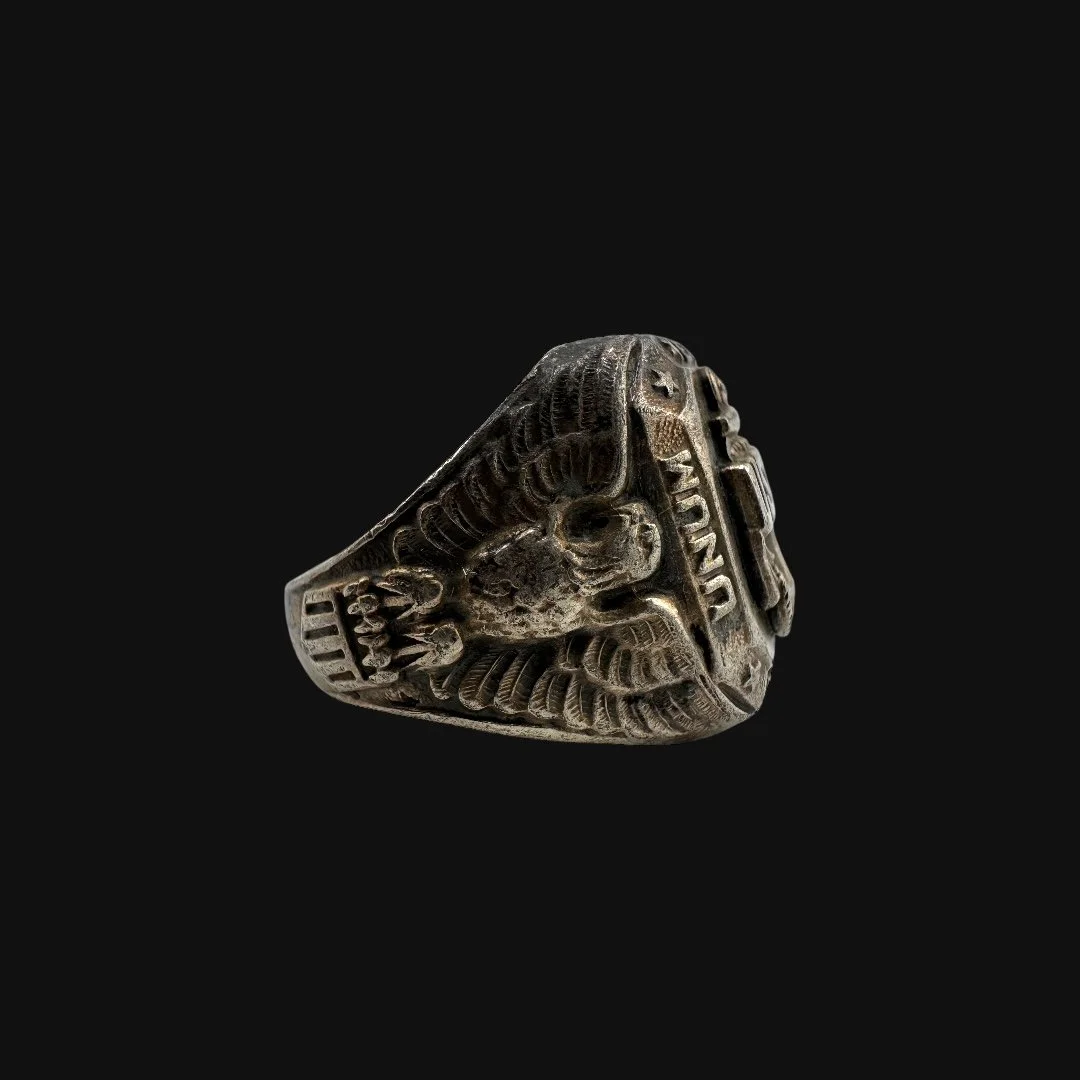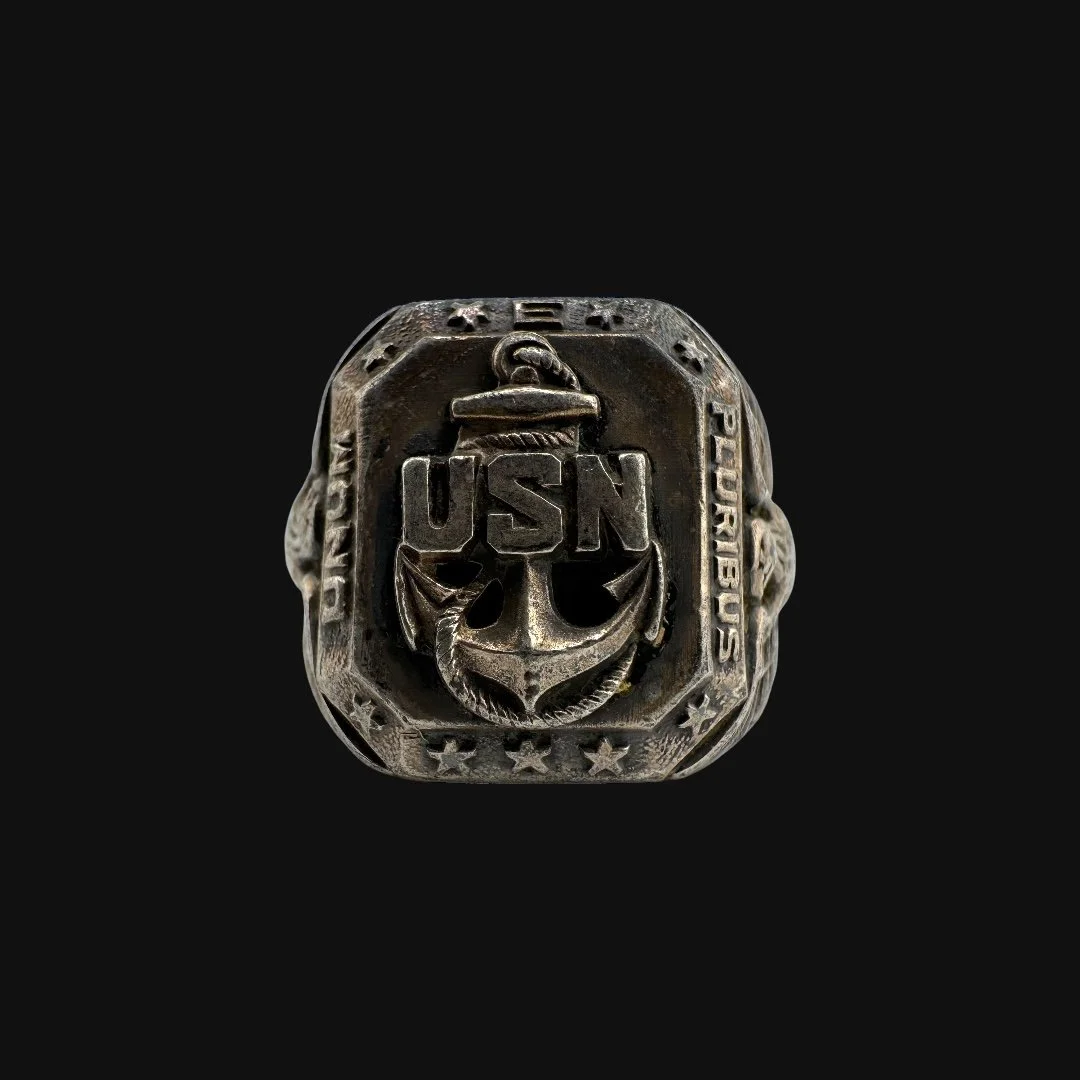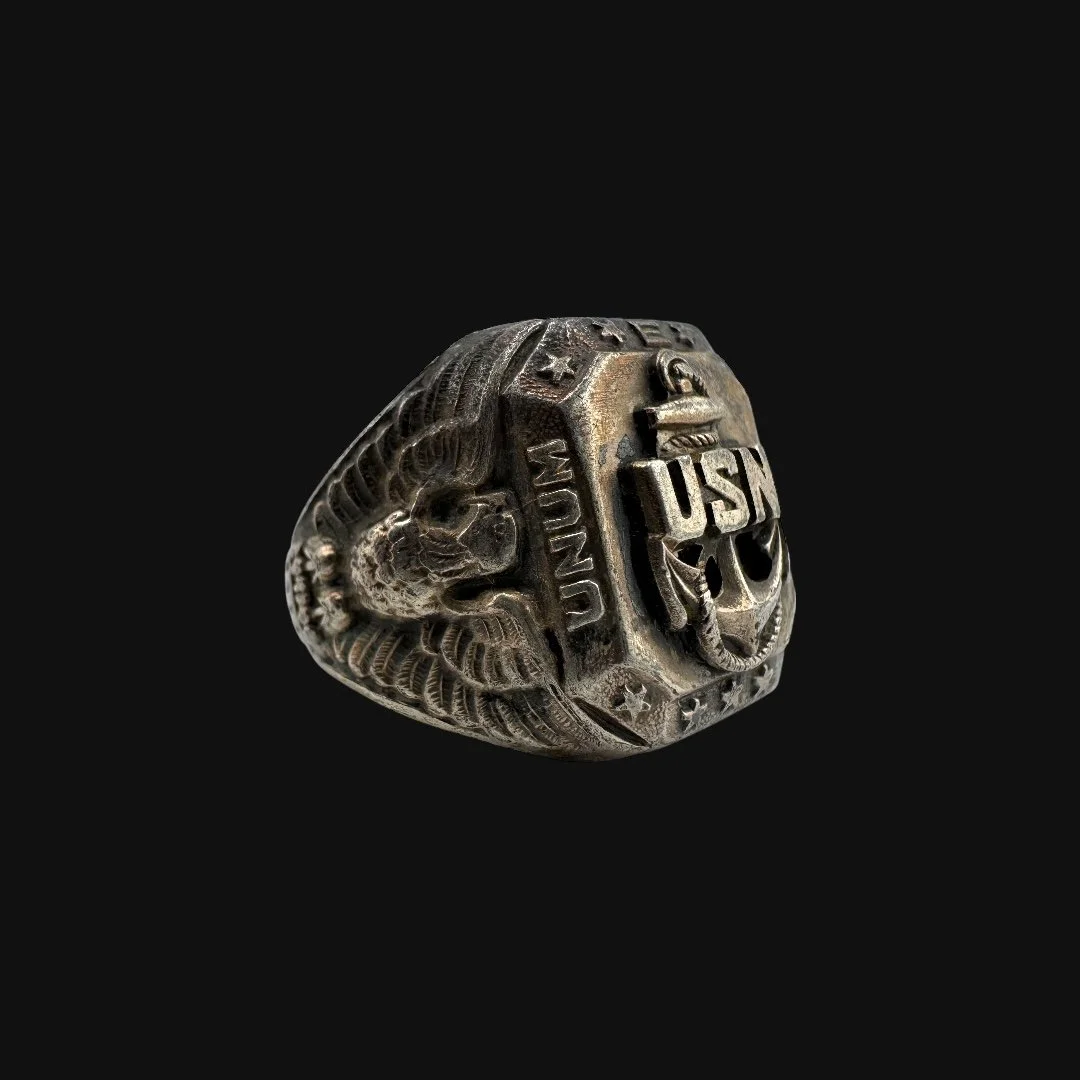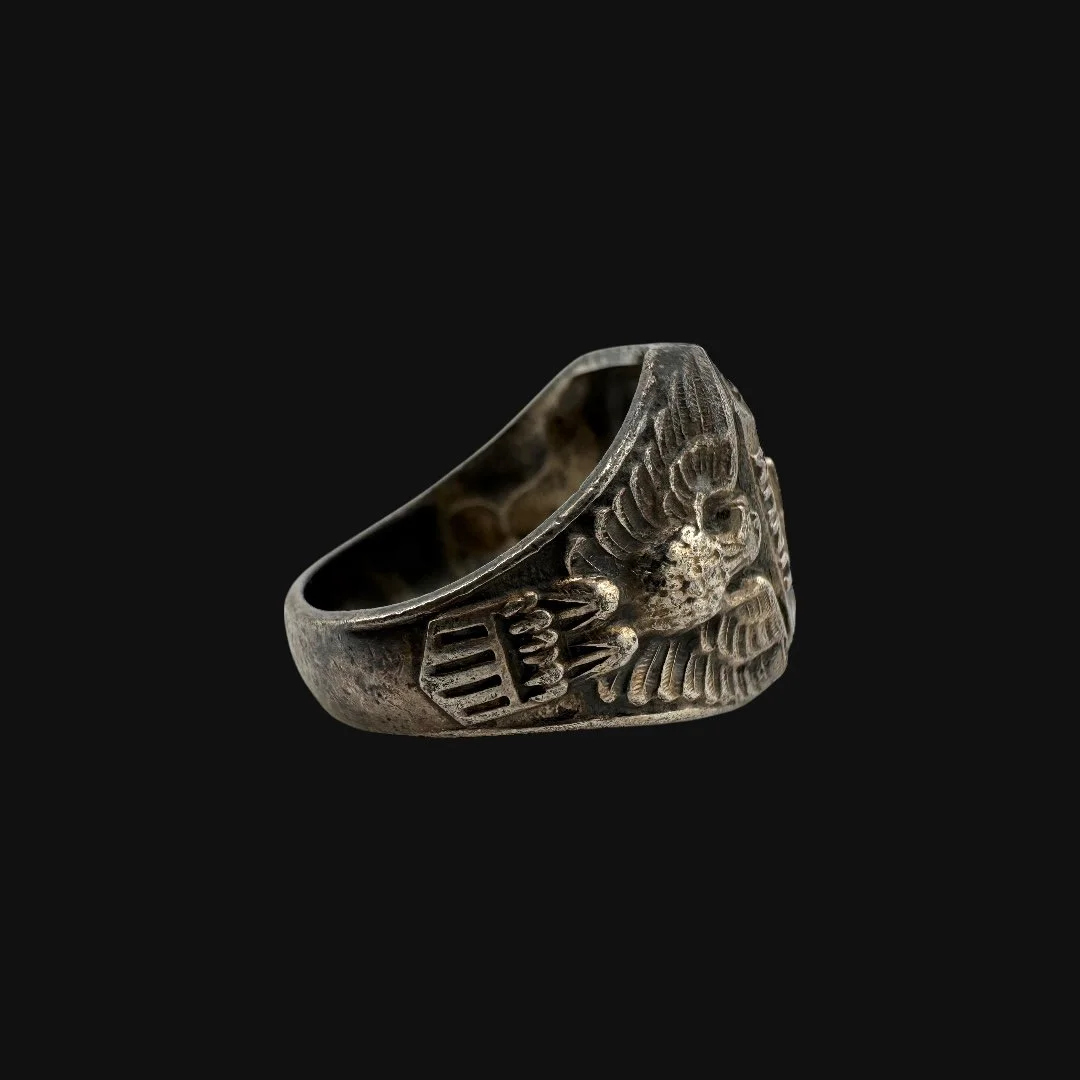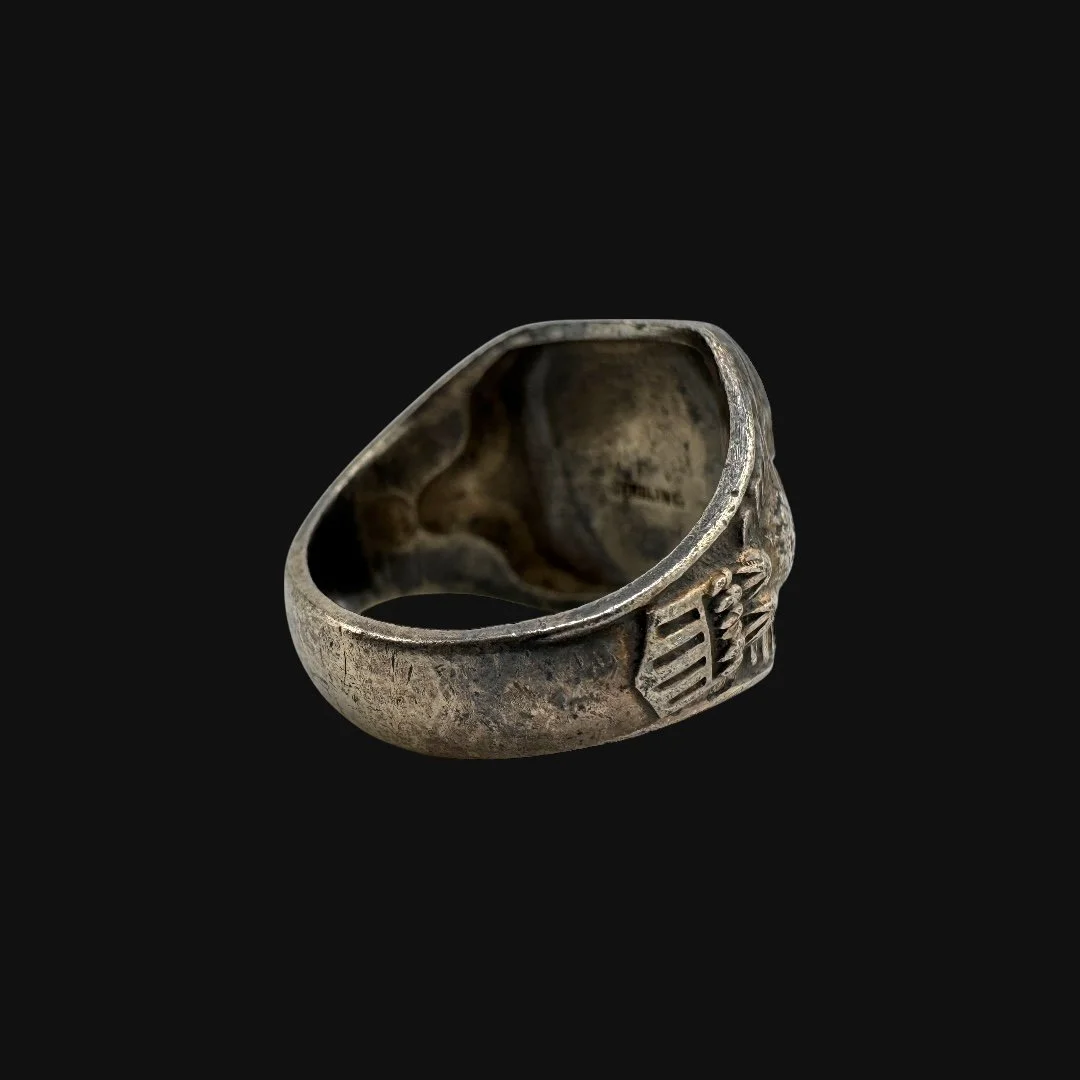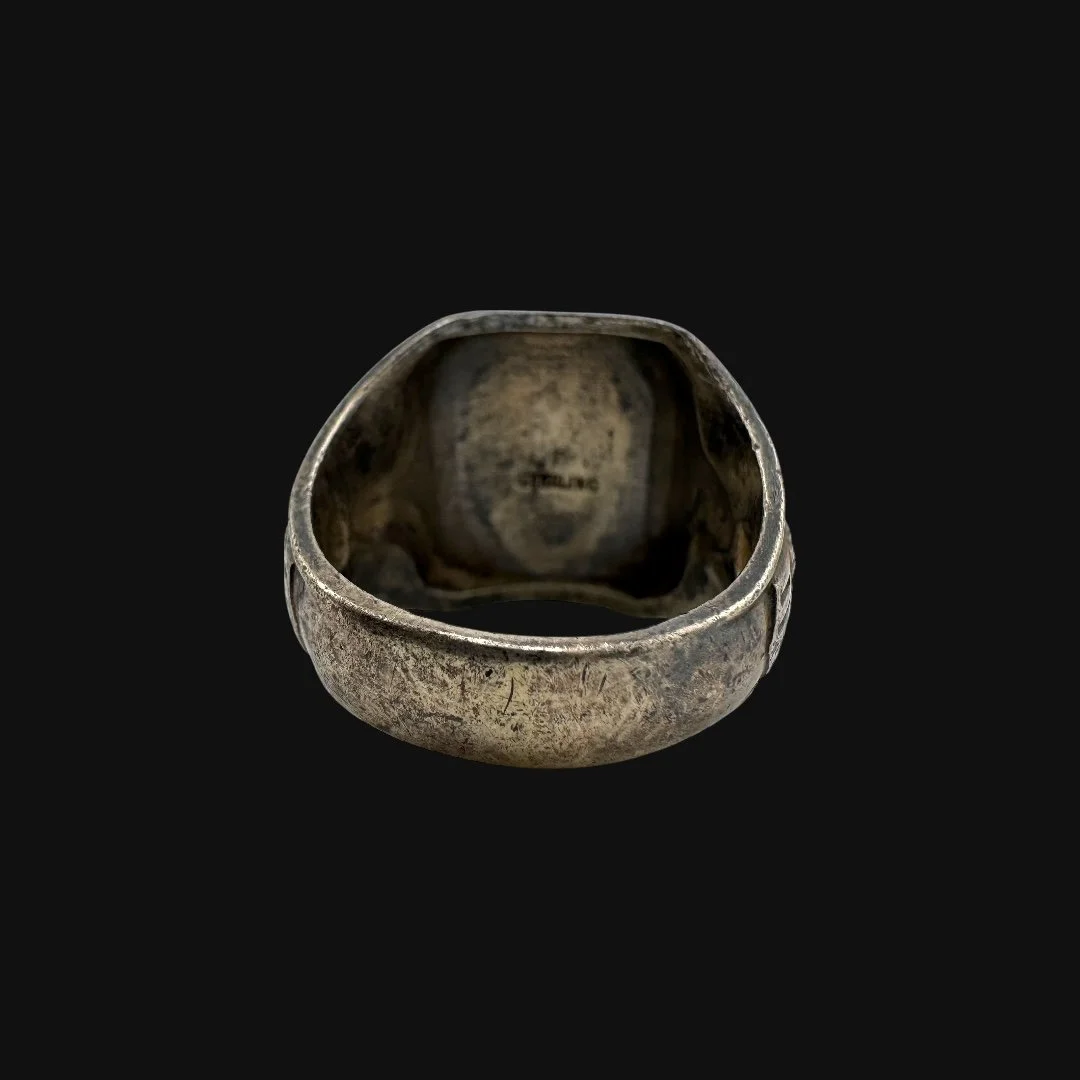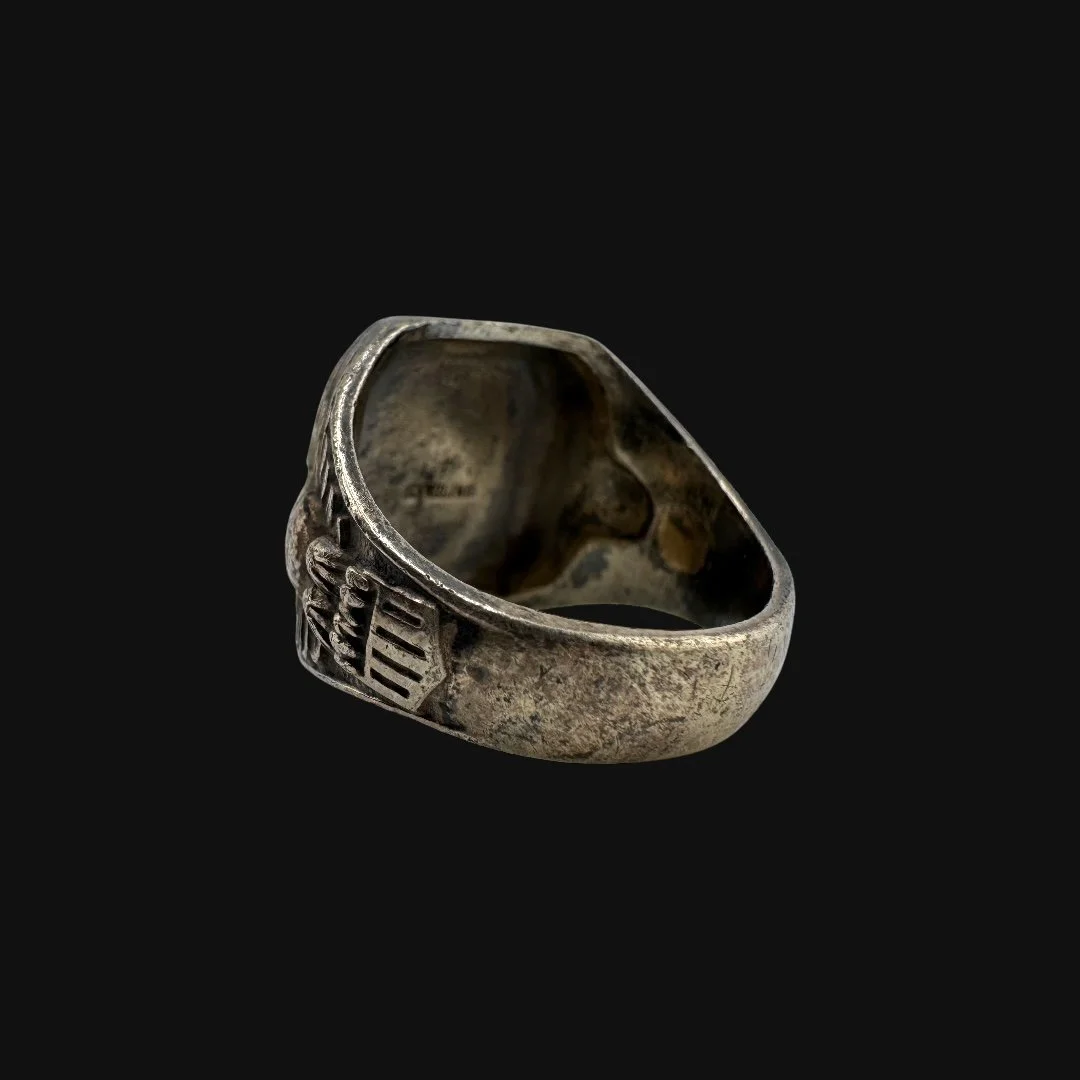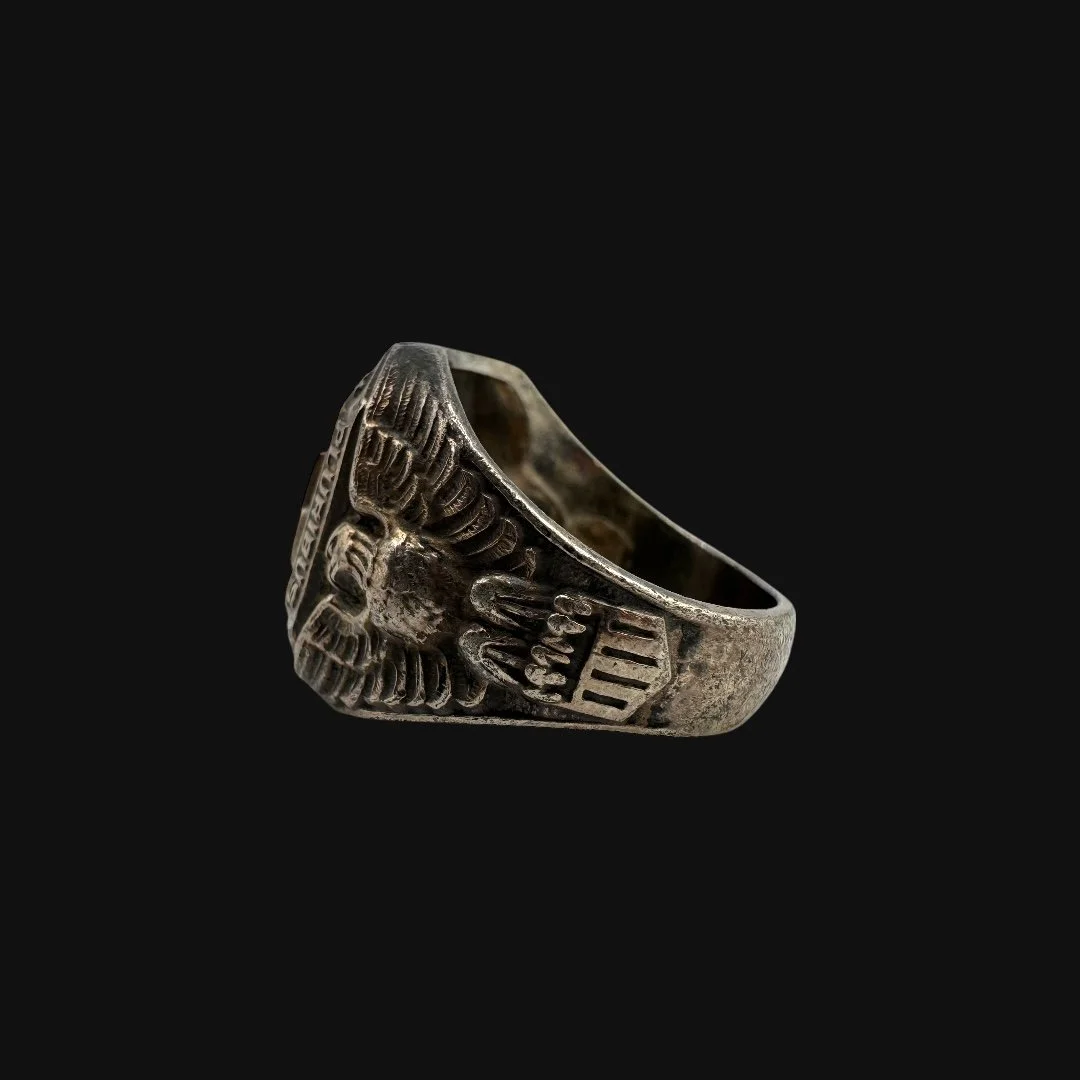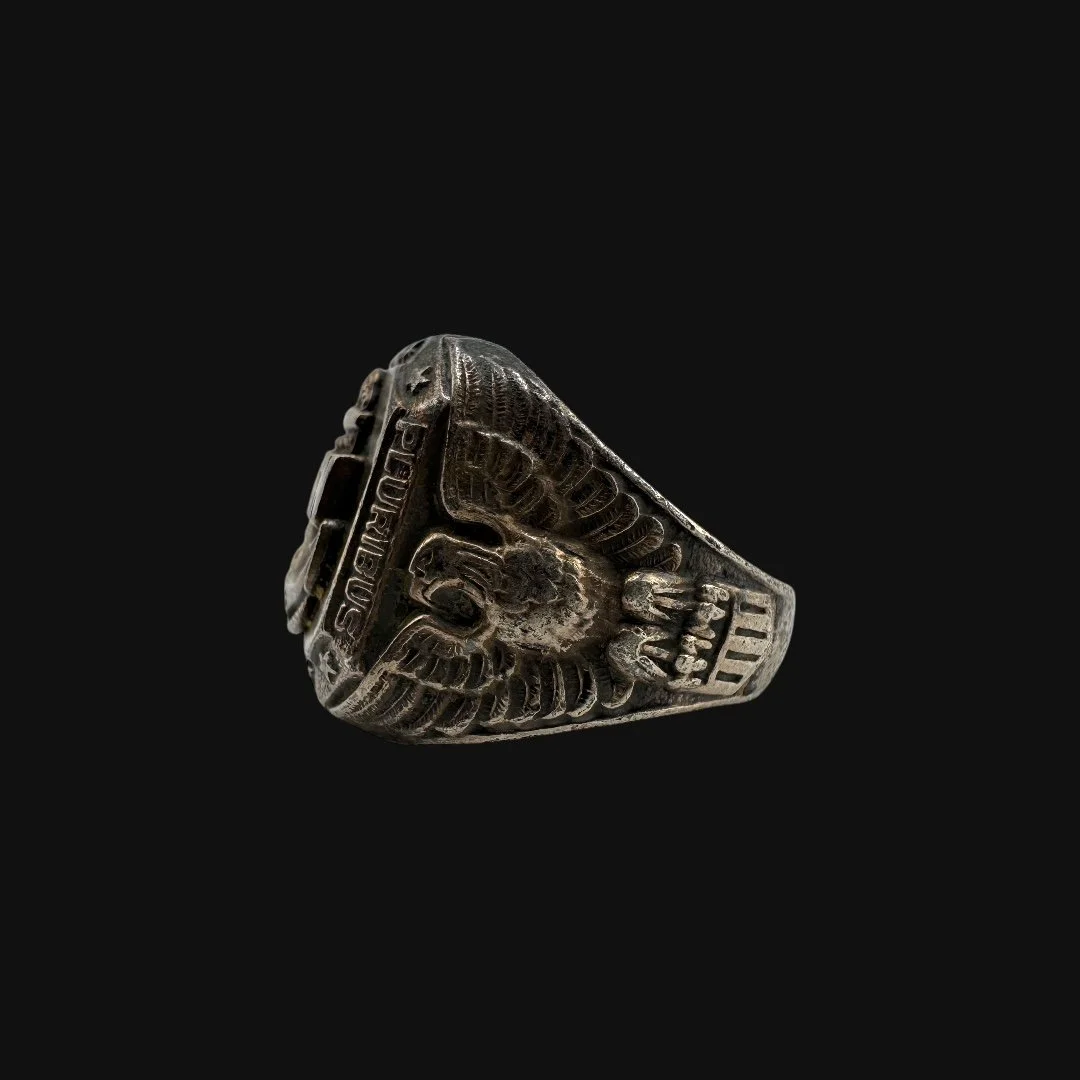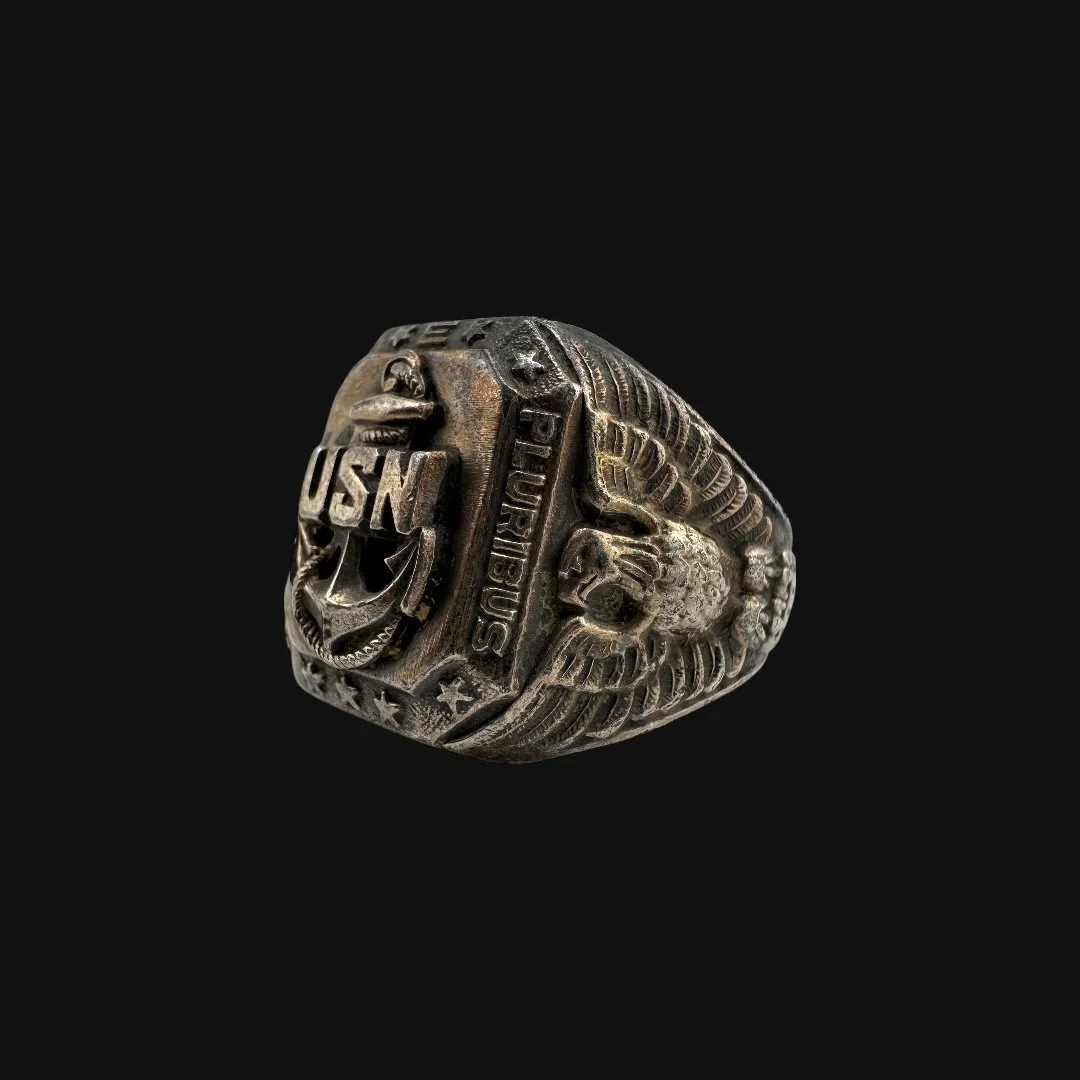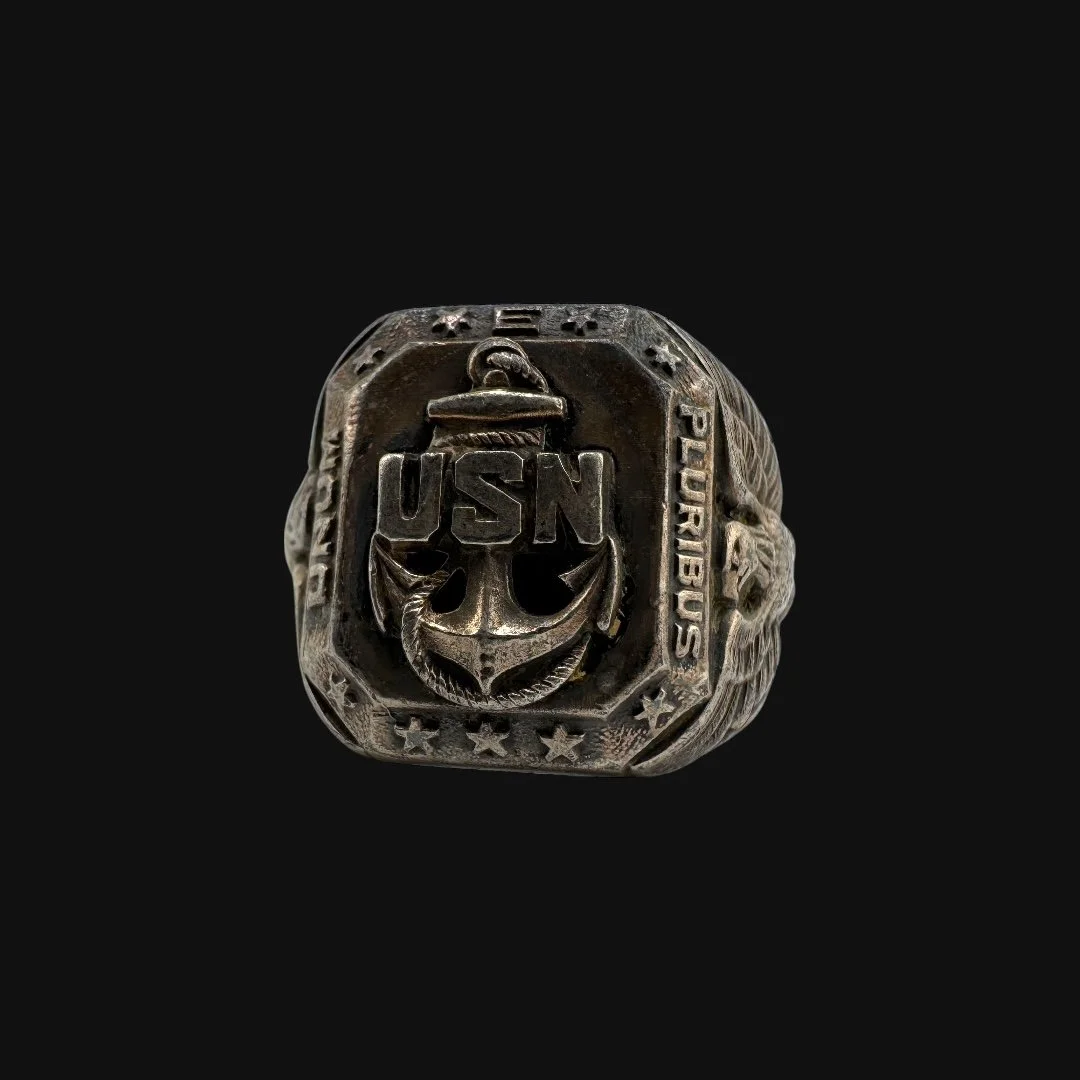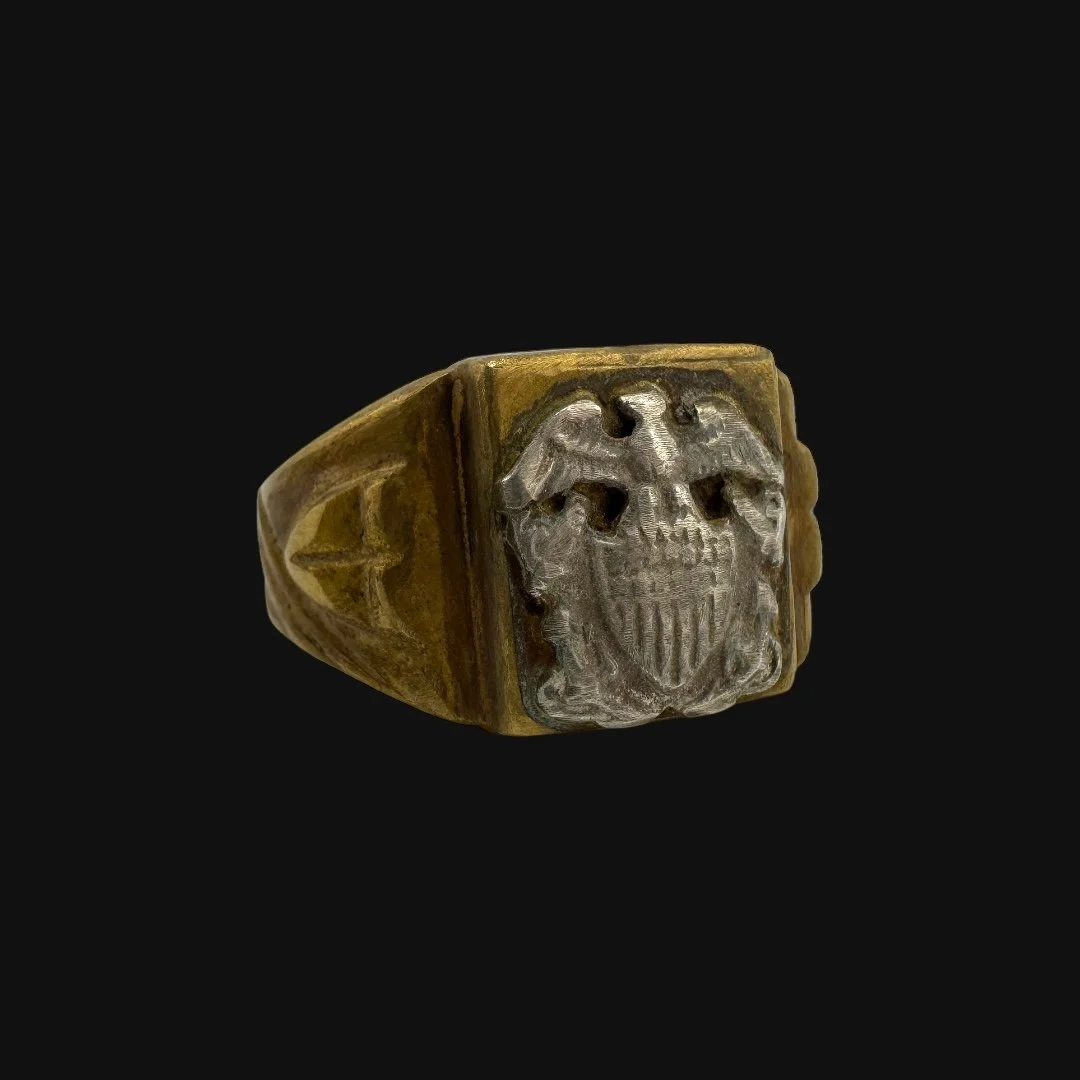 Image 1 of 13
Image 1 of 13

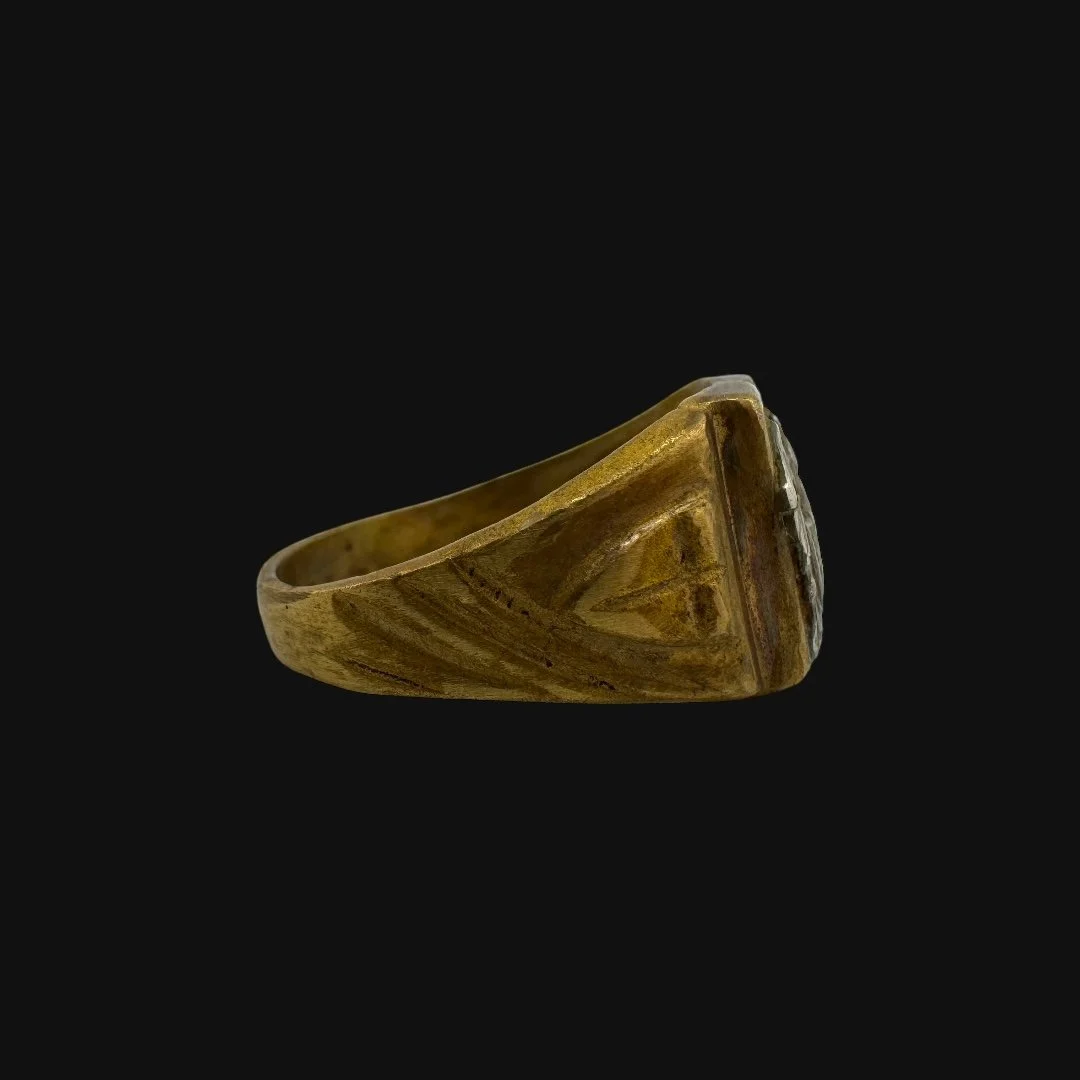 Image 2 of 13
Image 2 of 13

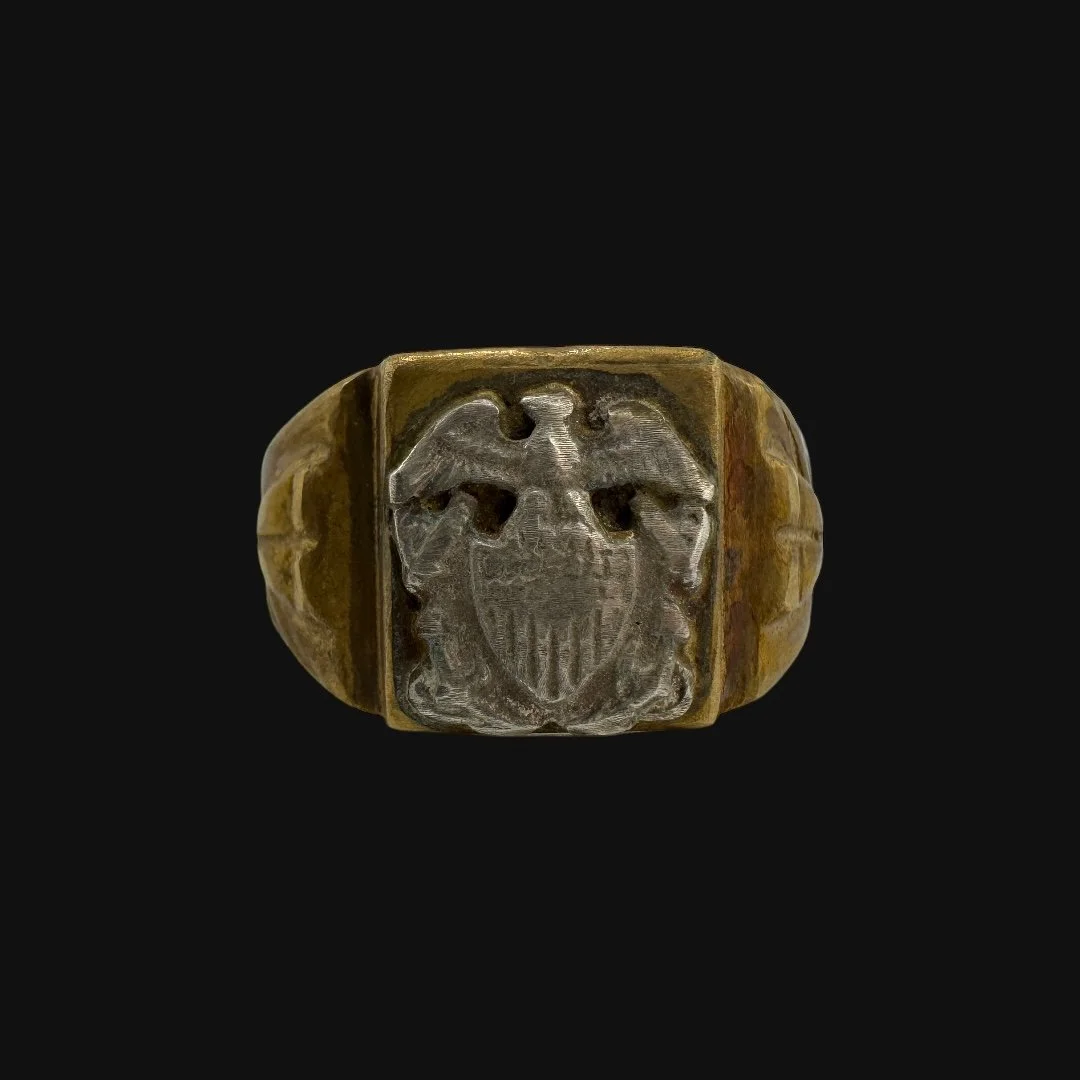 Image 3 of 13
Image 3 of 13

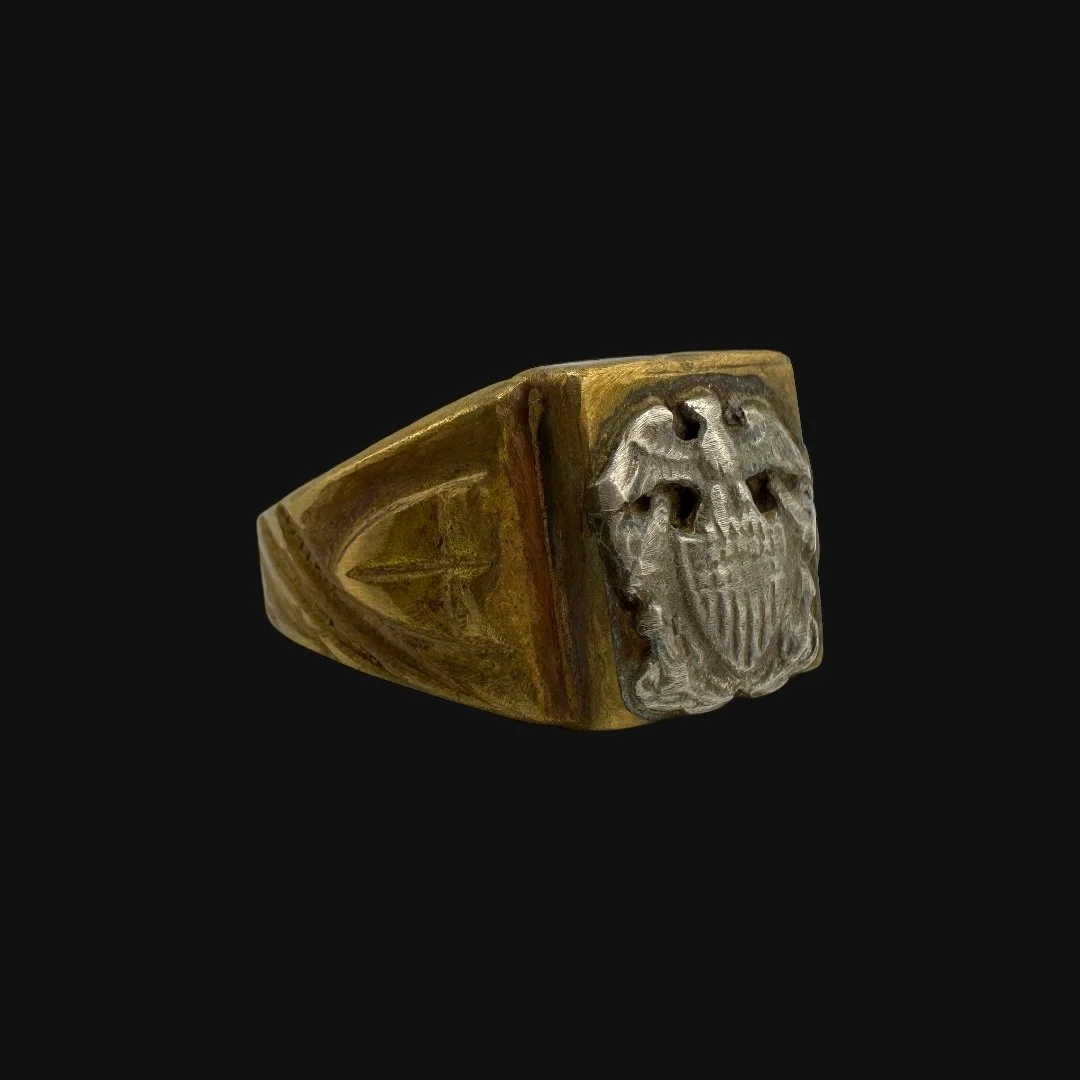 Image 4 of 13
Image 4 of 13

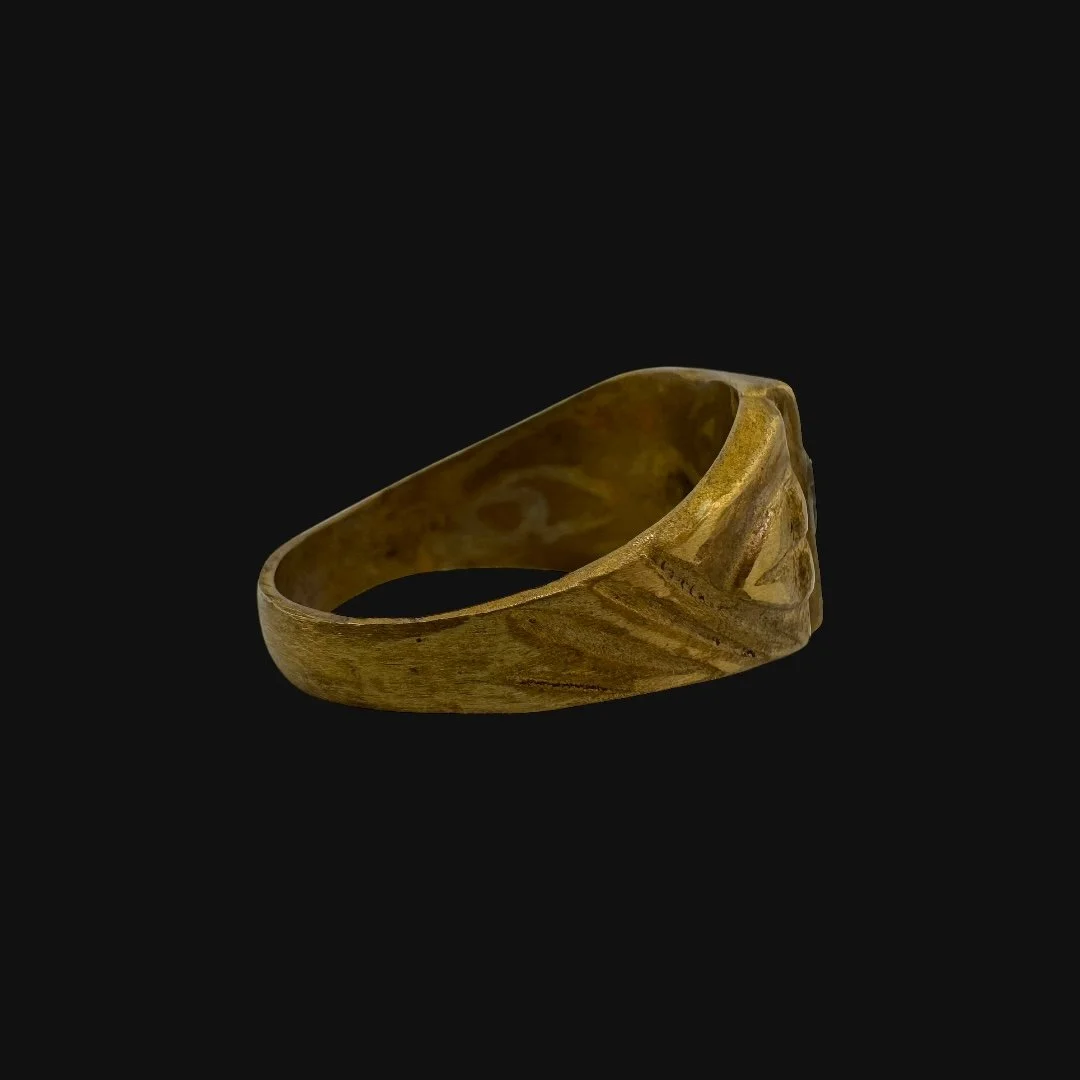 Image 5 of 13
Image 5 of 13

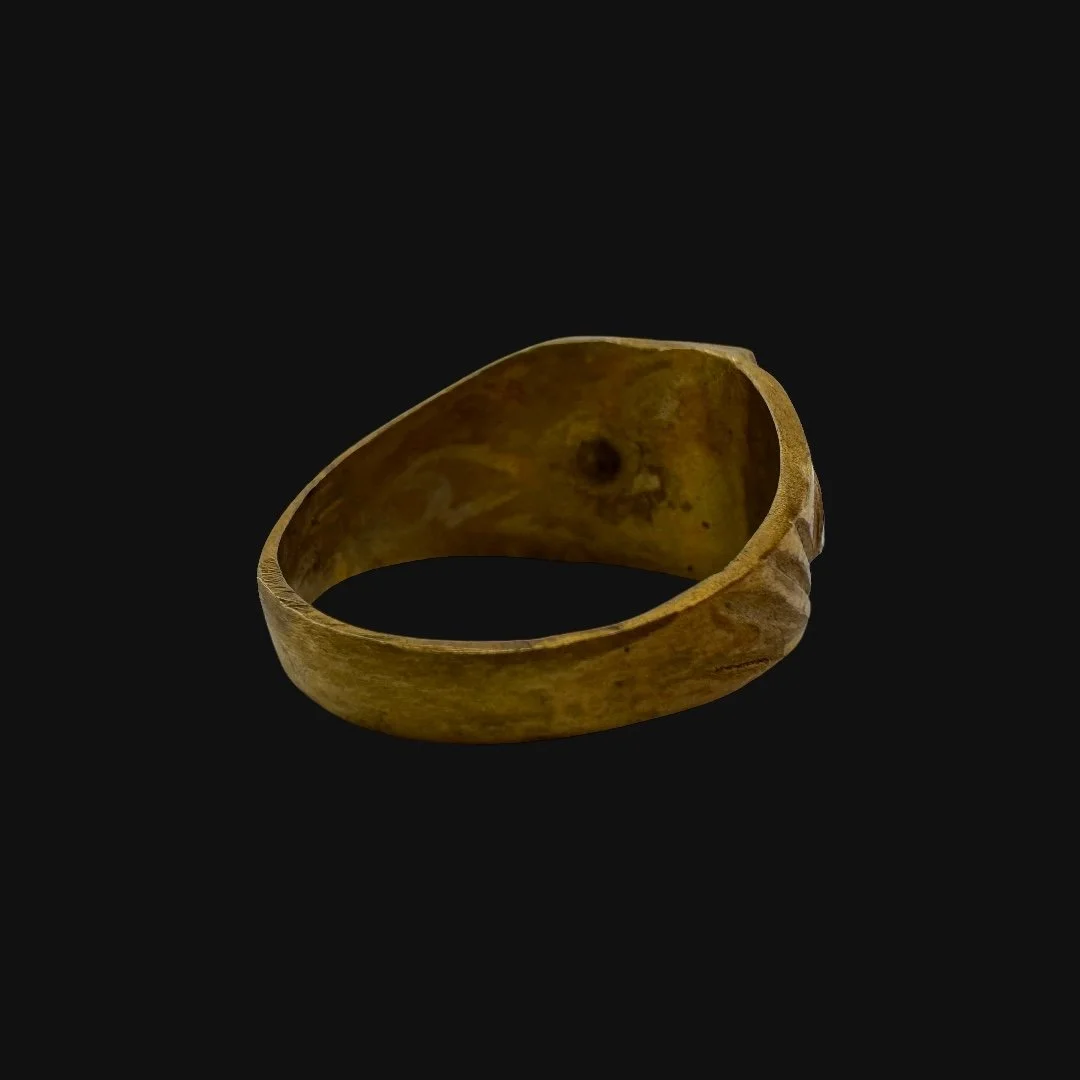 Image 6 of 13
Image 6 of 13

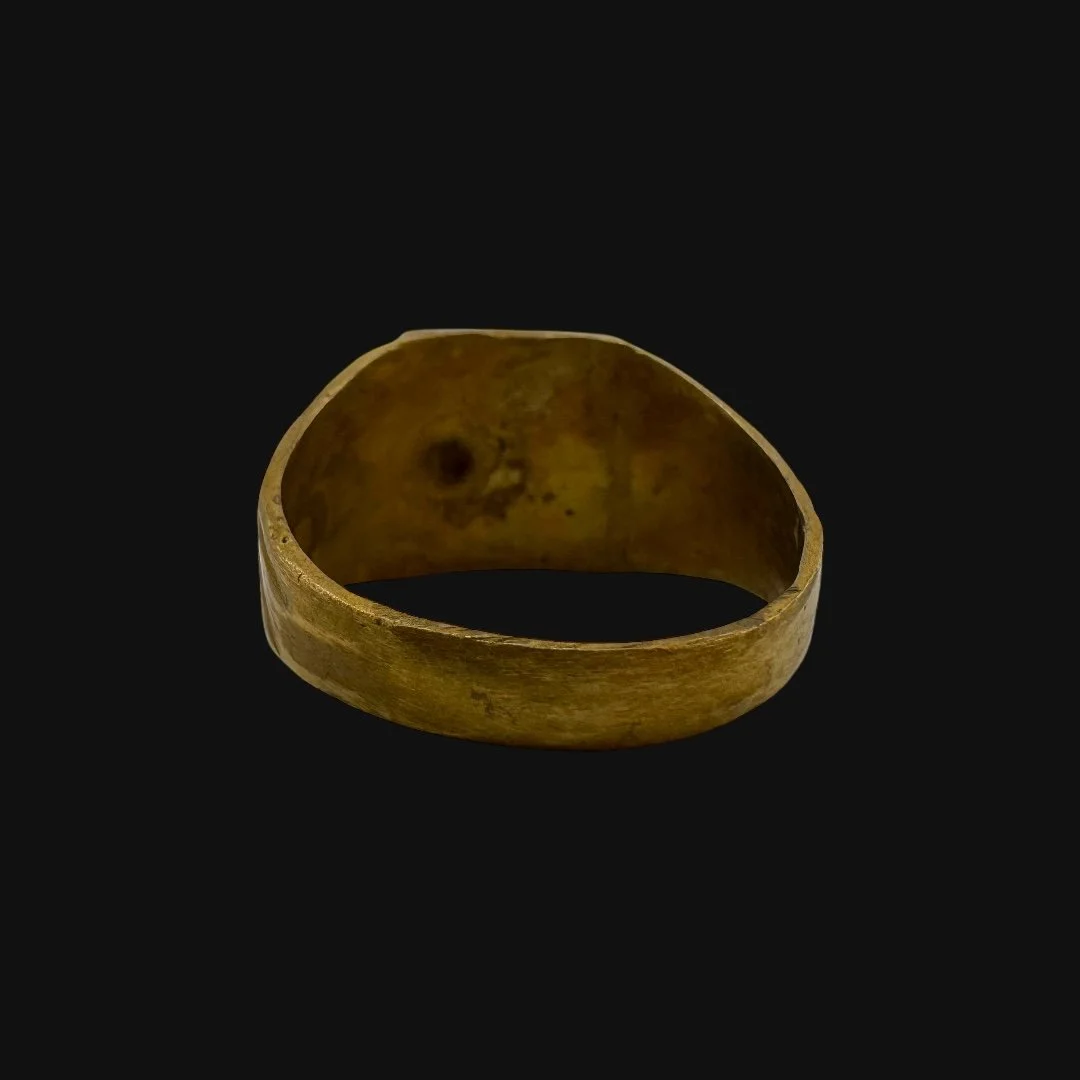 Image 7 of 13
Image 7 of 13

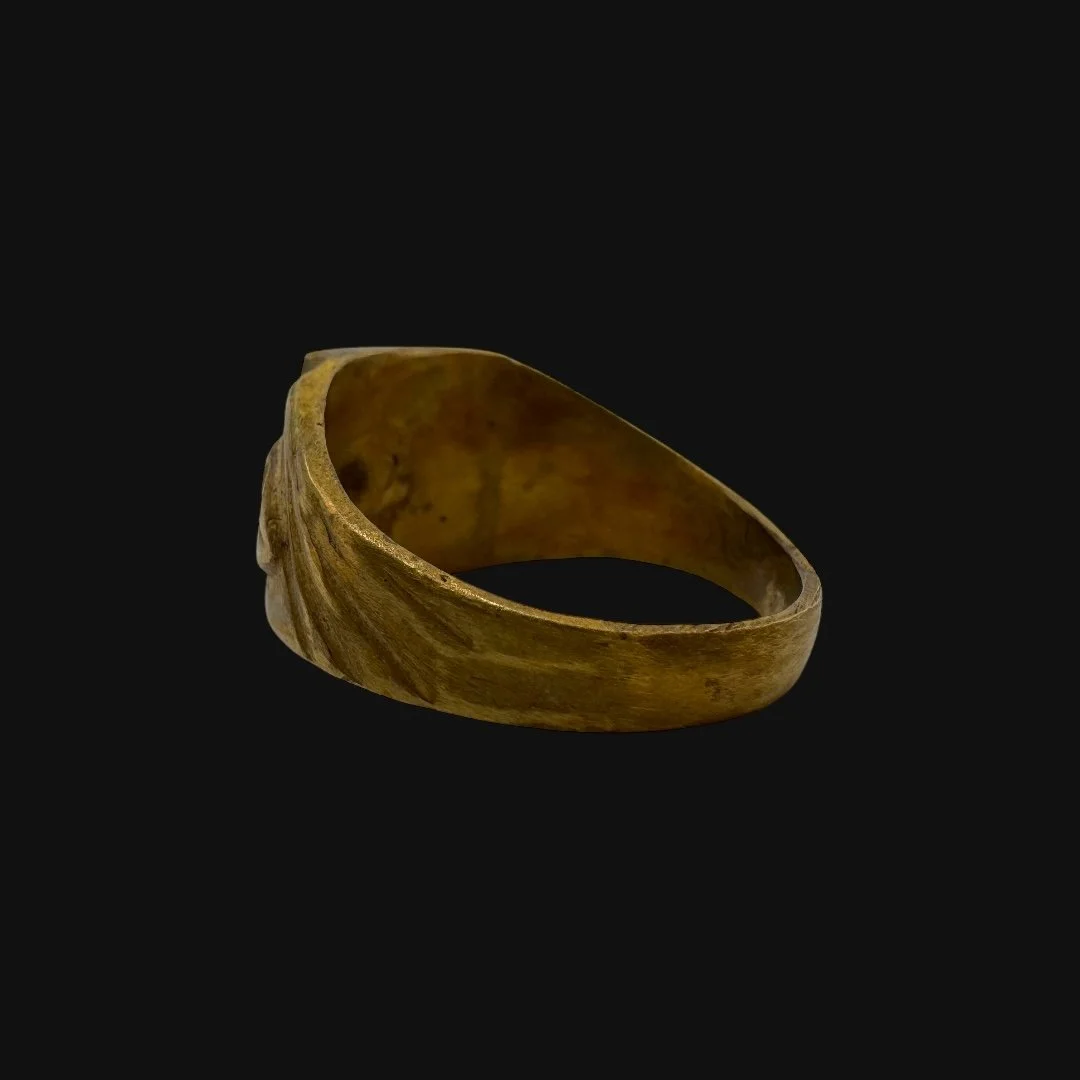 Image 8 of 13
Image 8 of 13

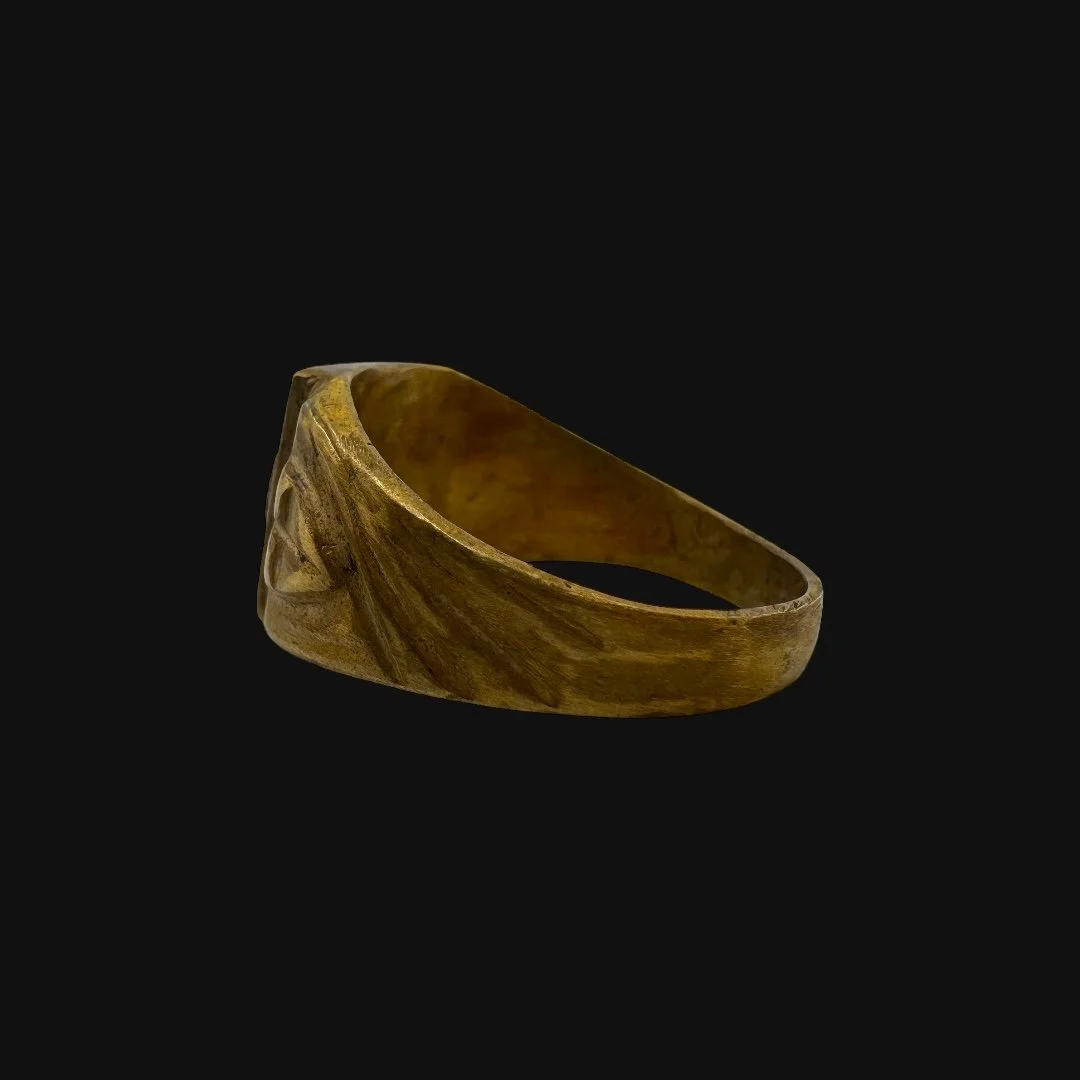 Image 9 of 13
Image 9 of 13

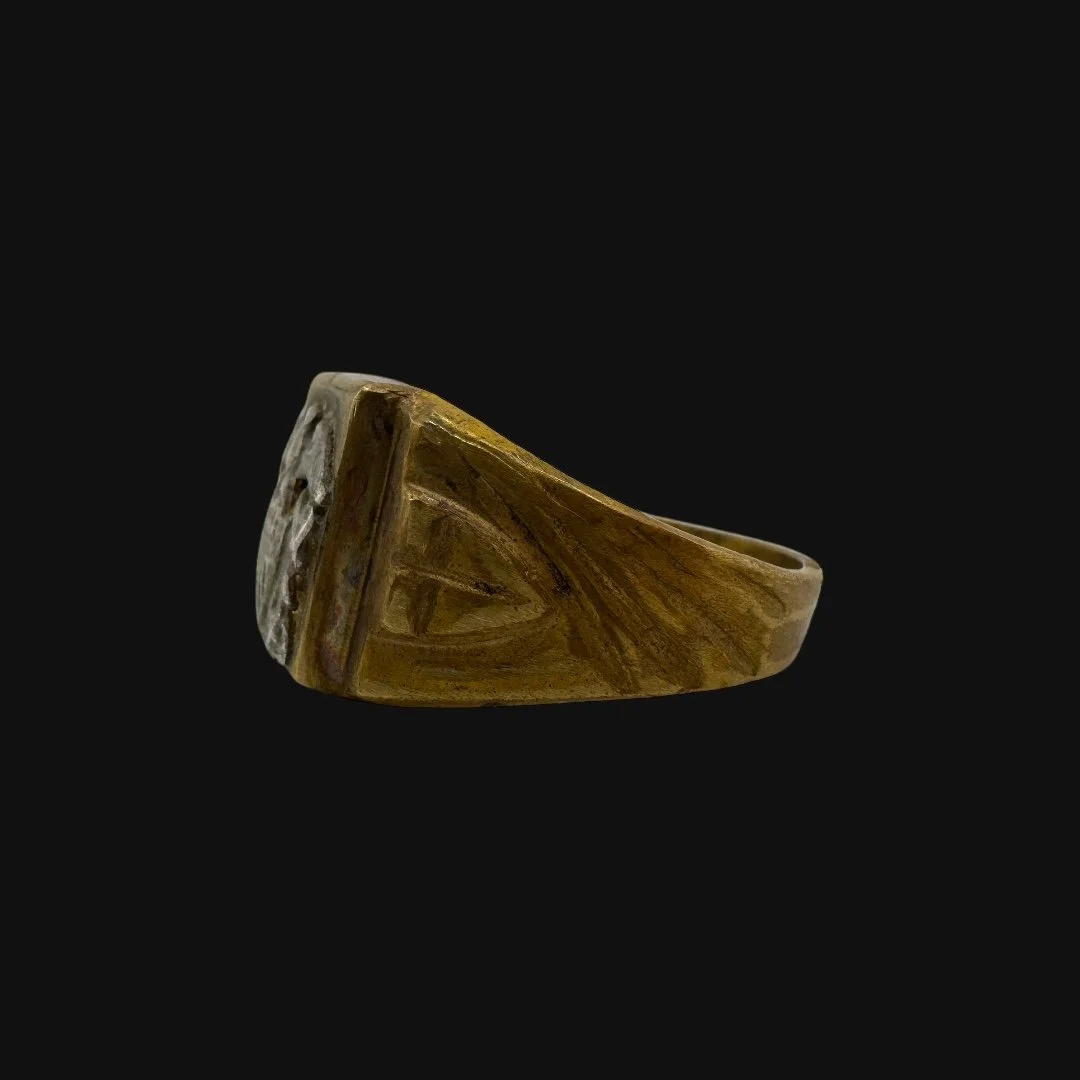 Image 10 of 13
Image 10 of 13

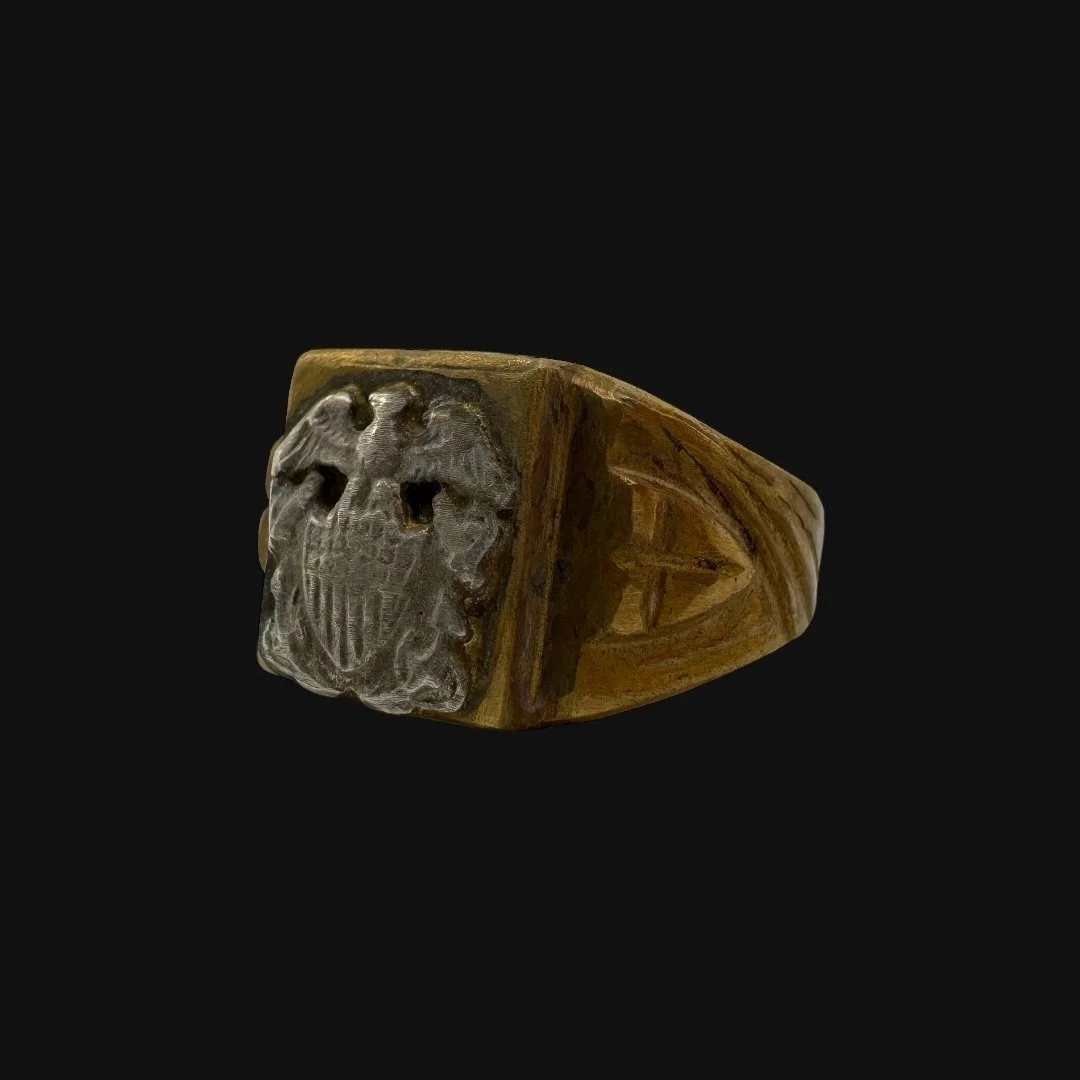 Image 11 of 13
Image 11 of 13

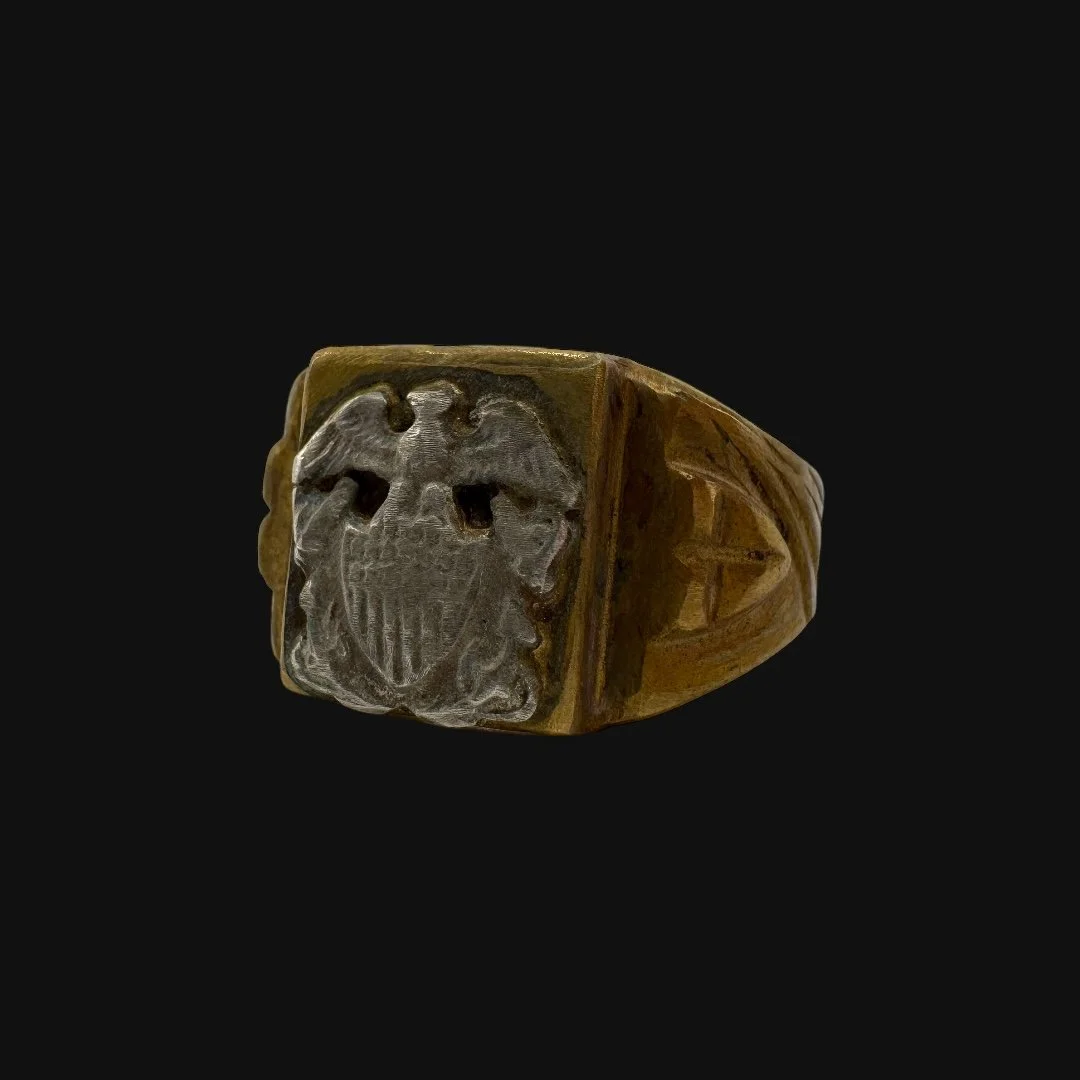 Image 12 of 13
Image 12 of 13

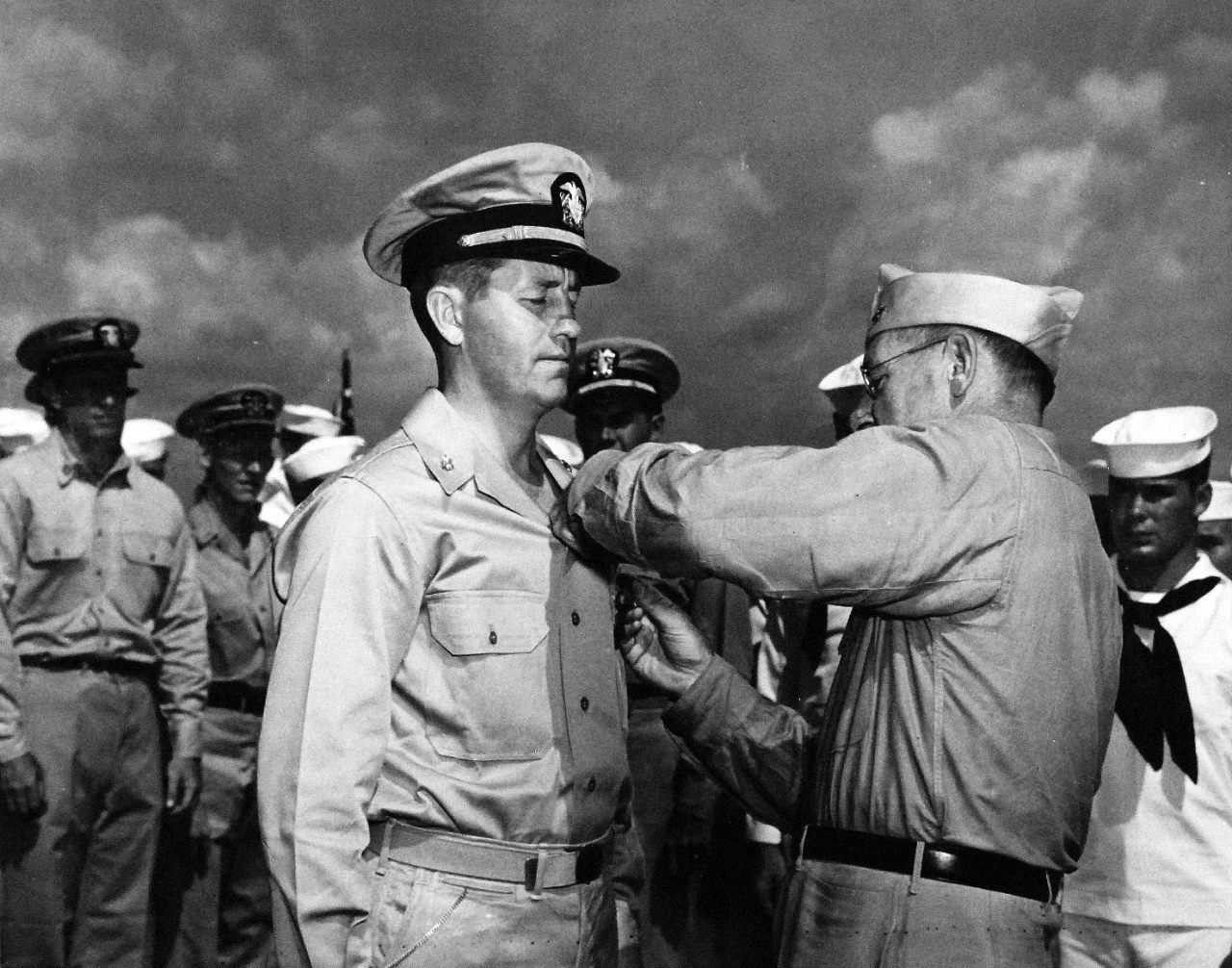 Image 13 of 13
Image 13 of 13














Original WWII 1943-1945 U.S. Navy “USN Eagle Shield & Anchors” Officer's Military Ring (Size 12.25)
Comes with a hand-signed C.O.A. and a full historical research write-up
From: World War II
Branch: U.S. Navy
Dated: 1943-1945
Ring Size: 12.25 (US)
Material: Bronze & Sterling Silver
Wearable History Collection:
This authentic 1943-1945 WWII-era ring, preserved in its original and unaltered condition, combines exceptional craftsmanship with lasting durability, making it fully suitable for modern wear today. As part of our exclusive World War II “Wearable History Ring Collection,” it offers the rare opportunity to own and wear a genuine piece of World War II. Both a timeless accessory and a tangible link to the past, this truly one-of-a-kind ring stands as a wearable tribute to the courage and sacrifice of a generation.
Historical Significance to the U.S. Navy During WWII:
The U.S. Navy was central to Allied victory in World War II, transforming from a modest peacetime fleet in 1941 into the most powerful naval force in history by 1945. Its responsibilities were vast—securing sea lanes, transporting men and supplies, blockading enemy nations, and spearheading amphibious assaults that carried the war across oceans. In the Atlantic, the Navy fought the long Battle of the Atlantic, developing convoy escorts, sonar, and escort carriers to defeat German U-boats and ensure supplies reached Britain. It also played decisive roles in Operation Torch, the invasions of Sicily and Italy, and ultimately the Normandy landings, where thousands of naval vessels enabled the largest amphibious assault ever mounted.
In the Pacific, the Navy carried the war to Japan after the attack on Pearl Harbor, shifting the balance of power through aircraft carriers and naval aviation. At the Battle of Midway, U.S. carriers sank four Japanese fleet carriers, halting Japanese expansion and marking a turning point in the Pacific War. From there, the Navy executed the island-hopping campaign, securing key victories at Guadalcanal, Tarawa, Saipan, Iwo Jima, and Okinawa. These operations required immense amphibious skill, supported by innovations like Higgins boats and mobile naval bases. At the Battle of Leyte Gulf, the largest naval engagement in history, the U.S. Navy destroyed the Japanese fleet as an effective fighting force, ensuring Allied dominance at sea.
Beyond major battles, submarines strangled Japan’s supply lines, sinking most of its merchant fleet and crippling its economy, while naval aviation grew into the decisive arm of modern warfare. The Navy also revolutionized logistics, creating mobile fleets sustained by oilers and repair ships that could operate across the globe. By war’s end, it had grown to over 3 million personnel and thousands of vessels, proving indispensable to Allied campaigns in both Europe and the Pacific.
The Navy’s historical significance lies in its ability to secure victory across two oceans and redefine modern warfare. It demonstrated that control of the seas meant control of global strategy, and its integration of carriers, submarines, amphibious forces, and logistical innovation reshaped naval doctrine for generations. By 1945, the U.S. Navy had not only destroyed the Axis fleets and secured Allied victory but had cemented America’s position as the world’s preeminent maritime power.
The Legacy Within This Ring:
This original World War II U.S. Navy ring is a rare and deeply personal artifact, privately commissioned and worn by a USN officer who served at sea during the most pivotal naval conflict in history. Bearing the proud USN eagle shield and anchors on its face, the ring allowed its owner to carry the emblem of his service not only on his uniform but also as a symbol worn daily on his hand. For officer who braved the Atlantic convoys, Pacific island landings, and the thunder of great fleet battles, such rings became more than jewelry. They served as enduring reminders of honor, sacrifice, and the unbroken bond of those who stood watch together on the oceans of war. Each engraved detail reflects the pride these men carried in wearing the Navy’s anchor, a symbol of strength, duty, and steadfast resolve. It spoke to nights spent on storm-swept decks, to the roar of carrier aircraft lifting into battle, and to the constant danger of submarines and enemy fire. Today, this ring survives as a wearable relic of the U.S. Navy’s legacy in World War II. It represents not only the courage of sailors who kept the sea lanes open and carried the fight across two oceans, but also the enduring brotherhood of the Navy a fellowship forged on saltwater and steel, and remembered through this lasting emblem of service.
Comes with a hand-signed C.O.A. and a full historical research write-up
From: World War II
Branch: U.S. Navy
Dated: 1943-1945
Ring Size: 12.25 (US)
Material: Bronze & Sterling Silver
Wearable History Collection:
This authentic 1943-1945 WWII-era ring, preserved in its original and unaltered condition, combines exceptional craftsmanship with lasting durability, making it fully suitable for modern wear today. As part of our exclusive World War II “Wearable History Ring Collection,” it offers the rare opportunity to own and wear a genuine piece of World War II. Both a timeless accessory and a tangible link to the past, this truly one-of-a-kind ring stands as a wearable tribute to the courage and sacrifice of a generation.
Historical Significance to the U.S. Navy During WWII:
The U.S. Navy was central to Allied victory in World War II, transforming from a modest peacetime fleet in 1941 into the most powerful naval force in history by 1945. Its responsibilities were vast—securing sea lanes, transporting men and supplies, blockading enemy nations, and spearheading amphibious assaults that carried the war across oceans. In the Atlantic, the Navy fought the long Battle of the Atlantic, developing convoy escorts, sonar, and escort carriers to defeat German U-boats and ensure supplies reached Britain. It also played decisive roles in Operation Torch, the invasions of Sicily and Italy, and ultimately the Normandy landings, where thousands of naval vessels enabled the largest amphibious assault ever mounted.
In the Pacific, the Navy carried the war to Japan after the attack on Pearl Harbor, shifting the balance of power through aircraft carriers and naval aviation. At the Battle of Midway, U.S. carriers sank four Japanese fleet carriers, halting Japanese expansion and marking a turning point in the Pacific War. From there, the Navy executed the island-hopping campaign, securing key victories at Guadalcanal, Tarawa, Saipan, Iwo Jima, and Okinawa. These operations required immense amphibious skill, supported by innovations like Higgins boats and mobile naval bases. At the Battle of Leyte Gulf, the largest naval engagement in history, the U.S. Navy destroyed the Japanese fleet as an effective fighting force, ensuring Allied dominance at sea.
Beyond major battles, submarines strangled Japan’s supply lines, sinking most of its merchant fleet and crippling its economy, while naval aviation grew into the decisive arm of modern warfare. The Navy also revolutionized logistics, creating mobile fleets sustained by oilers and repair ships that could operate across the globe. By war’s end, it had grown to over 3 million personnel and thousands of vessels, proving indispensable to Allied campaigns in both Europe and the Pacific.
The Navy’s historical significance lies in its ability to secure victory across two oceans and redefine modern warfare. It demonstrated that control of the seas meant control of global strategy, and its integration of carriers, submarines, amphibious forces, and logistical innovation reshaped naval doctrine for generations. By 1945, the U.S. Navy had not only destroyed the Axis fleets and secured Allied victory but had cemented America’s position as the world’s preeminent maritime power.
The Legacy Within This Ring:
This original World War II U.S. Navy ring is a rare and deeply personal artifact, privately commissioned and worn by a USN officer who served at sea during the most pivotal naval conflict in history. Bearing the proud USN eagle shield and anchors on its face, the ring allowed its owner to carry the emblem of his service not only on his uniform but also as a symbol worn daily on his hand. For officer who braved the Atlantic convoys, Pacific island landings, and the thunder of great fleet battles, such rings became more than jewelry. They served as enduring reminders of honor, sacrifice, and the unbroken bond of those who stood watch together on the oceans of war. Each engraved detail reflects the pride these men carried in wearing the Navy’s anchor, a symbol of strength, duty, and steadfast resolve. It spoke to nights spent on storm-swept decks, to the roar of carrier aircraft lifting into battle, and to the constant danger of submarines and enemy fire. Today, this ring survives as a wearable relic of the U.S. Navy’s legacy in World War II. It represents not only the courage of sailors who kept the sea lanes open and carried the fight across two oceans, but also the enduring brotherhood of the Navy a fellowship forged on saltwater and steel, and remembered through this lasting emblem of service.
